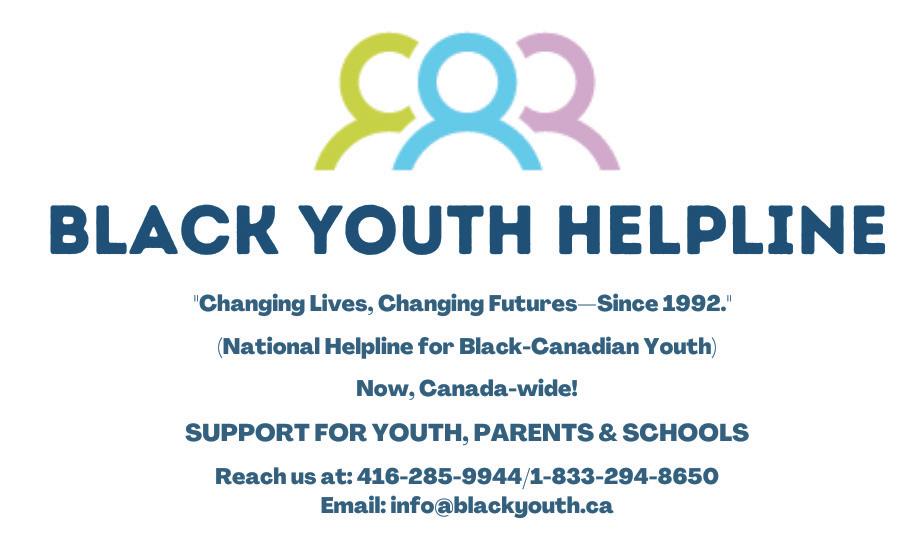




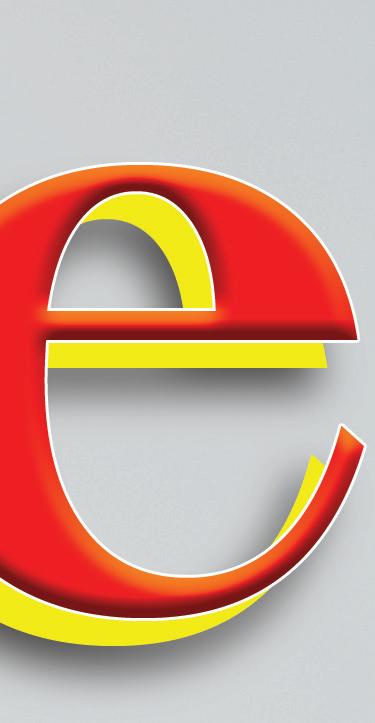














Recognized as the city’s go-to cosmetic clinic for melanin-rich skin, The Face Lab, led by Clinical Director JOANNA AUGUSTE, has built its reputation on delivering elevated, natural-looking results using some of the most innovative technologies available in Canada. See story on page 7. Photo contributed.
By LINCOLN DEPRADINE
ACity of Toronto mayoral election is more than a year away, but it’s not too early for incumbent Olivia Chow to outline her case to be returned to office and she has received the backing of the Toronto & York Region Labour Council (TYRLC).
Jamaican-born Andria Babbington, president of the council that represents more than 200,000 workers from diverse sectors in labour unions across the Toronto region, says that “Chow’s been pushing an expansion in affordable and rental housing” and also has given attention to users of the public transit system.
Chow, as city leader, underscores “the importance of having a progressive mayor”, said Babbington.
“It’s been two years since Olivia Chow was elected Mayor of Toronto, ending close to 13 years of Conservative mayoral rule in the city,” she said.
“While previous mayors ignored transit riders, saddling them with higher fares and worse service, Chow has backed dedicated lanes which make commutes faster and more reliable. A better transit system also means more riders, less pollution and less congestion for everyone else.”

tober 26, 2026.
Municipal balloting, including election of a Toronto mayor, is scheduled for Oc-
“As a re-election campaign approaches, recent polling indicates that Chow leads the field of competitors,” said Babbington, but warned that “Conservatives will continue to try to regain control of Toronto — one of

the largest governments in Canada — and stop any policies that put workers, transit riders and renters first.”
Chow, in a recent message to Toronto residents, titled “The Mayor’s Note”, reflected on her first two years as mayor, saying
she’s “focused on fixing what’s broken and building what matters”.
“If you know me, then you know I’m driven to fix things. It’s what makes me effective — whether that’s driving changes at city hall or striking deals with other levels of government. I don’t easily accept obstacles or delays. It takes determination and pragmatism to get things done,” said Chow. “Two years is not long enough to fix everything, but we’ve already accomplished so much together.”
The accomplishments of which she’s “most proud”, said the mayor, include the building of more housing and public transit investment.
“We made a historic $500 million investment in fixing the TTC, and we secured billions to buy new subway trains,” said Chow. “We have 25,000 rent-controlled, affordable and market homes either under construction or starting next year. We’ve also helped move over 3,800 people from shelters to permanent housing.”
Her “big picture vision” for Toronto is “a more affordable and safer city”, said Chow.
“With a year and a half left in this term,” she said, “I’m recommitting to listening and acting, to always finding a path forward. With hope and determination to improve our city, for everyone.”
It was a hectic occasion, not just of one event on one day, but a series of activities spearheaded by Blackhurst Cultural Centre (BCC) for Toronto’s 2025 commemoration of Emancipation Day.
Exhaustion aside, the effort was worth it, BCC’s Dr. Itah Sadu told Share
“We didn’t have weekend events, we had weekend experiences,” said Sadu, who was impressed with the community support for the various events.
BCC, a Black-led non-profit organization that includes a board of directors, was formerly A Different Booklist Cultural Centre that Sadu and her husband Miguel San Vicente operated for more than 27 years.
Blackhurst Cultural Centre is under construction in the Mirvish Village on Bathurst Street. On completion, it will feature a soundproofed drumming studio, an art gallery, a digital podcast room, a bookstore, and multi-purpose community spaces.
Emancipation Day commemorates the 1834 abolition of the enslavement of Africans in the then British-ruled territories of Canada and in the Caribbean.
BCC, in this year’s promotion, invited people to join “Blackhurst Cultural Centre for several days of Black history and culture as we commemorate Emancipation Day, marking the abolition of legalized slavery across the British Empire”.
The commemorative activities included a bilingual book launch.
As well, organizers hosted the 12th an-

nual “Underground Freedom Train” ride and an August 1 “Community Walk” on Bloor Street, from Christie Pits Park to the Bathurst Street location of BCC.
“We normally walked to Christie Pits but this year we went in the reverse,” Sadu ex-
plained. “Every year, on Emancipation Day, the Blackhurst Cultural Centre and A Different Booklist, we animate Bloor Street. We have a series of pannists that we place along major intersections that’s one thing to just signal that today is Emancipation Day. I
am glad it’s a steelpan because that was an instrument of resistance.”
According to Sadu, “community showed up for the walk, people showed up. Little kids in the daycare along the way hailed us;

By RON FANFAIR
matters!
Pride and joy fill Dr. Zainab Abdurrahman when she sees the excitement on the faces of young Black girls and their mothers as they enter her office for the first time.
“They look at me and I could sense them saying, ‘Oh my gosh, she looks like us’,” said the allergist and clinical immunologist. “That is so important, especially living in Canada.”
Stepping into the role as president of the Ontario Medical Association (OMA), the first Black woman to hold the position in the organization’s 145-year history, is much more than a personal achievement for Abdurrahman.
It signifies that excellence has no colour barriers and that those young girls belong in every room where decisions are made.
That is what Abdurrahman is most proud of as she advocates for the province’s 43,000 doctors, residents and medical students.
An OMA board member for four years before her historic ascendancy, she said her active involvement in leadership fueled her ambition to seek the presidency.
During her medical school years at the Univer-


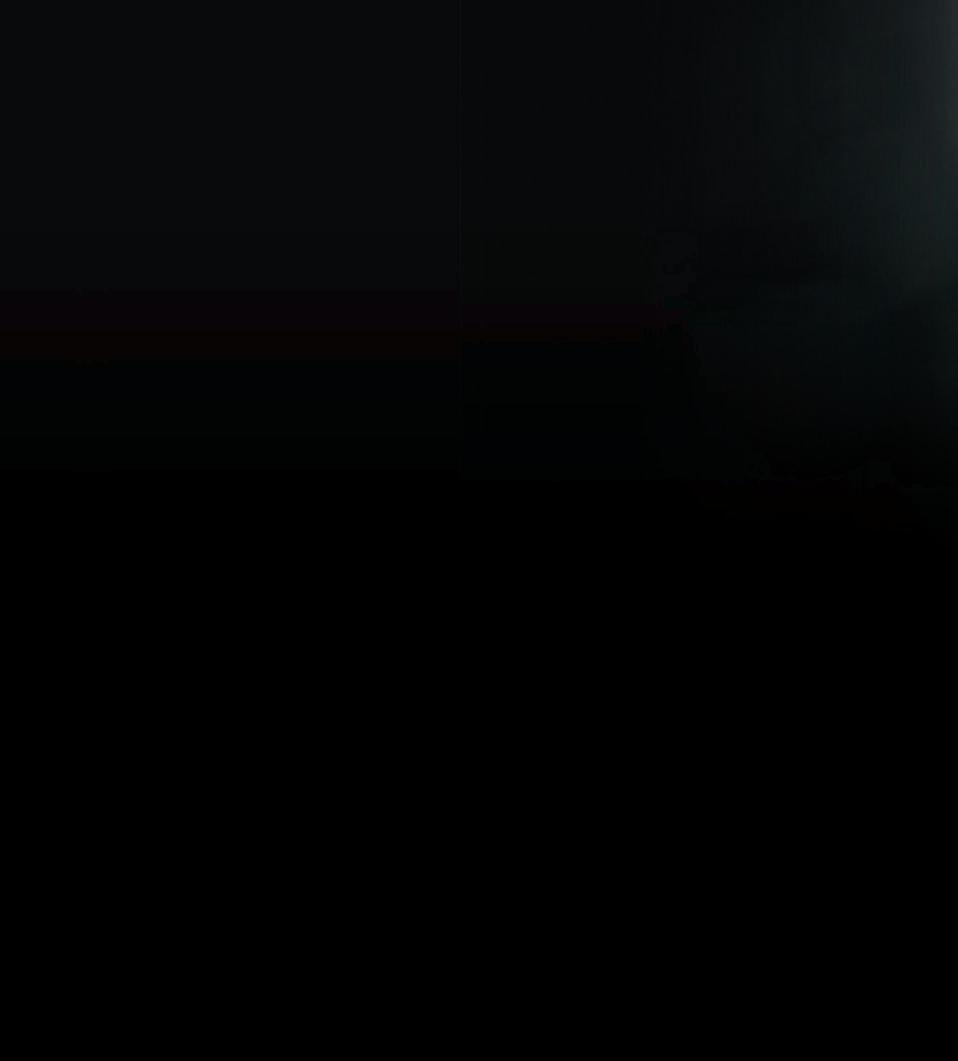

sity of Toronto, Abdurrahman served as co-president of her cohort and head of the Women in Surgery group. She also contributed to the development of a new biostatistics module in the curriculum that reflected her strong emphasis on communication and data literacy in medicine.
She was also a key contributor to the Black Scientists Taskforce on COVID-19 Vaccination Equity and the Black Health & Vaccine Initiative, in partnership with the Black Physicians Association of Ontario.
In addition, Abdurrahman served as a physician peer leader and member of the educational task force for OntarioMD, contributing to digital health innovation and medical education.




“When I became a physician working in my office, I thought I was going to focus mostly on my patients and that would be my advocacy work,” she said. “However, there have been a lot of changes in healthcare and the turmoil in 2016 and 2017 about the well-being and retention of physicians, particularly family doctors. I used my voice before to help effect change, and I kept hearing my parents say that you can complain about something or be part of the solution.”
Before last February’s provincial elections, 28 per cent of Ontarians said healthcare was the single most crucial factor influencing their votes.
Their concerns included primary care shortages and access gaps, as well as wait-times and hallway healthcare.
In the next nine months of her presidency, Abdurrahman’s focus is on ensuring that the province’s healthcare system is sustainable and that Ontarians have access to a system they are paying for through taxes.
“The population has increased and we have a severe shortage of specialists across the province, especially after COVID,” she said. “Many physicians See RECRUITING Pg. 14



By RON FANFAIR
Long before becoming the fastest man in the world, Donovan Bailey had an entrepreneurial mindset, understanding that sound business principles could help individuals and organizations achieve gains.
After winning the 100-metre sprint and becoming the first Canadian to legally break the 10-second barrier at the 1996 Atlanta Olympics, he leveraged that gold medal and fame to develop his brand and build successful business ventures.
While farming might be a hobby for some, it is a business for others, particularly in the Jamaican parish of Manchester, where agriculture is a major part of the local economy.
Being born and raised in that environment exposed Bailey to the fundamentals of business at an early age, sparking a lasting interest.
“I grew up seeing my uncle growing and selling produce,” he said. “My dad was in real estate and I observed him buying, renting and managing properties. I understood very early that by being ambitious and successful, I could have the freedom to do what I want and control my destiny.”
By age 19, Bailey had his first home and was cruising the Greater Toronto Area (GTA) streets in a Porsche convertible.
“From a young age, I knew I was going to be successful,” the Order of Ontario and Order of Canada inductee said. “I didn’t know what I was going to be when I was 10 or 15, and that track was going to lead me to where I am. What my parents taught me was that whatever I did, I had to be successful. That meant I had to work hard and smart, surround myself with people who would uplift me and ignore the negativity and noise.”


Visiting his father in the GTA from age seven, Bailey joined him permanently five years later.
Though his mother didn’t want to make the move, she saw the benefit of their son coming to be with his father and older brother.
“The decision to relocate was difficult because I was a mama’s boy,” he said.
“When she decided that Canada was not going to be a place for her to be, she told me I would join my dad because I am going to be a man one day, and she could not teach me how to be that. Though separated, the good thing was that both my parents were in my life all the time.”
Unlike many newcomers who settle in urban areas with affordable housing options, Bailey moved into a home in Ontario’s largest town.







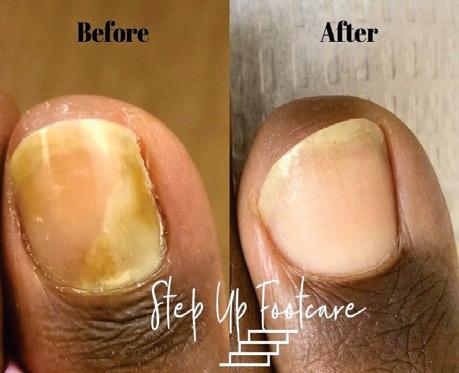
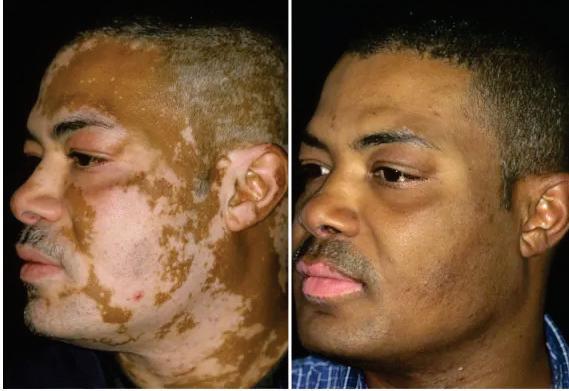
“My father practiced what he preached to us,” he said. “He came to Canada, worked his butt off as a machinist and bought a house in Oakville.”
Three years older, O’Neil Bailey was an Ontario high school long jump champion and an outstanding player in basketball and football.
That made the assimilation easier.
“I just came in and joined him in sports,” said the two-time Olympic champion.
“In addition, my stepmom (Icilda Bailey) co-founded the Canadian-Caribbean Association of Halton. I was immersed in sport and culture from the time I got here, so there was no fear or reason to be shy. They were the people who laid the foundation for my seamless transition.”
Bailey knew he could run fast since his days at Mount Olivet Primary School in Jamaica.
Though the fastest kid in his school and parish, track and field didn’t appeal to him at a young age.
Even after Bailey moved permanently to Canada in August 1980, the sport was not a priority, despite being the Halton region’s 100-metre and long jump champion and a member of their victorious relay team.
With scholarship offers from several American universities, including Syracuse, his father didn’t think the fourth of his five sons was mature enough to be on his own.
Instead, Bailey did Business Studies at Sheridan College and was a power
forward on the basketball team in the mid1990s.
“I didn’t train or care about track and field,” he said. “Basketball was my love and still is my love. Though I was good in college, I knew I was not going to make it big in the sport.”
Leaving college early, Bailey worked as a marketing consultant with a downtown Toronto firm while helping manage his father’s real estate portfolio.
The owner of several properties in the GTA and tired of the harsh Canadian winters, George Bailey was preparing to re-migrate to Jamaica.
Bailey’s father died of cancer while his mother, Daisy, succumbed to Alzheimer’s.
Enjoying life as a successful businessman and away from track and field for nearly four years, Bailey was lured back to

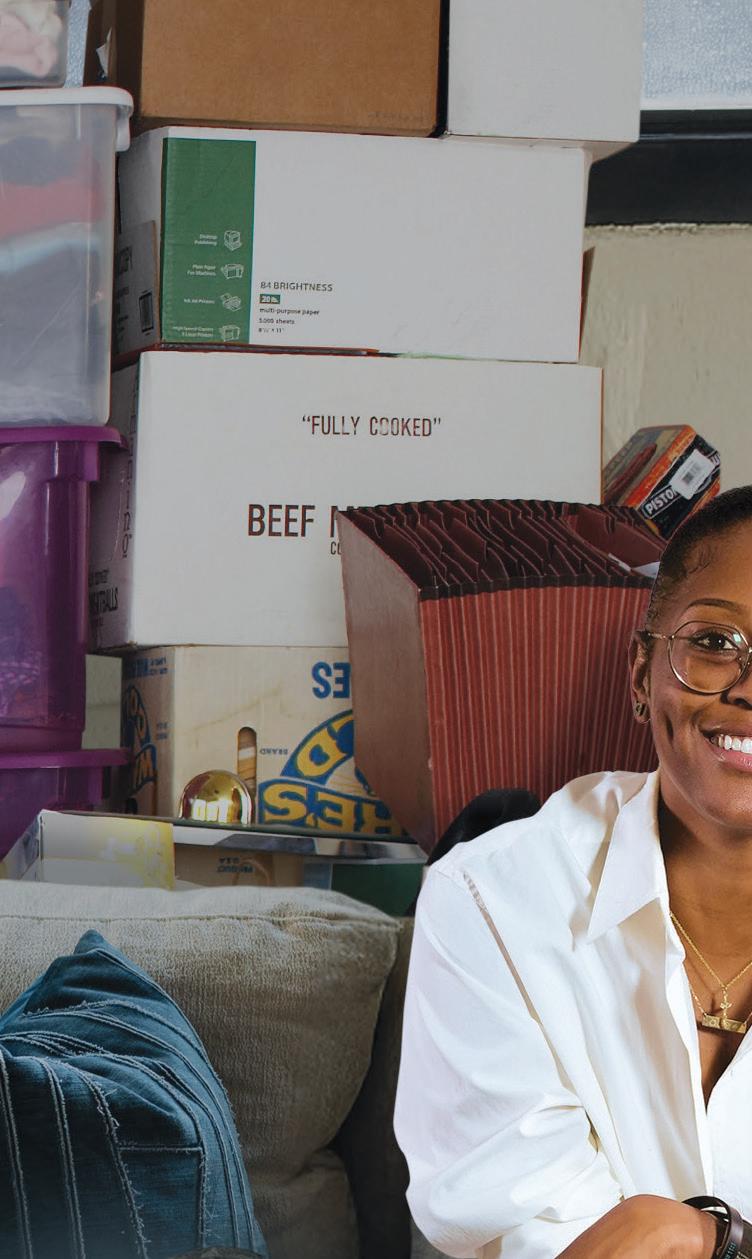

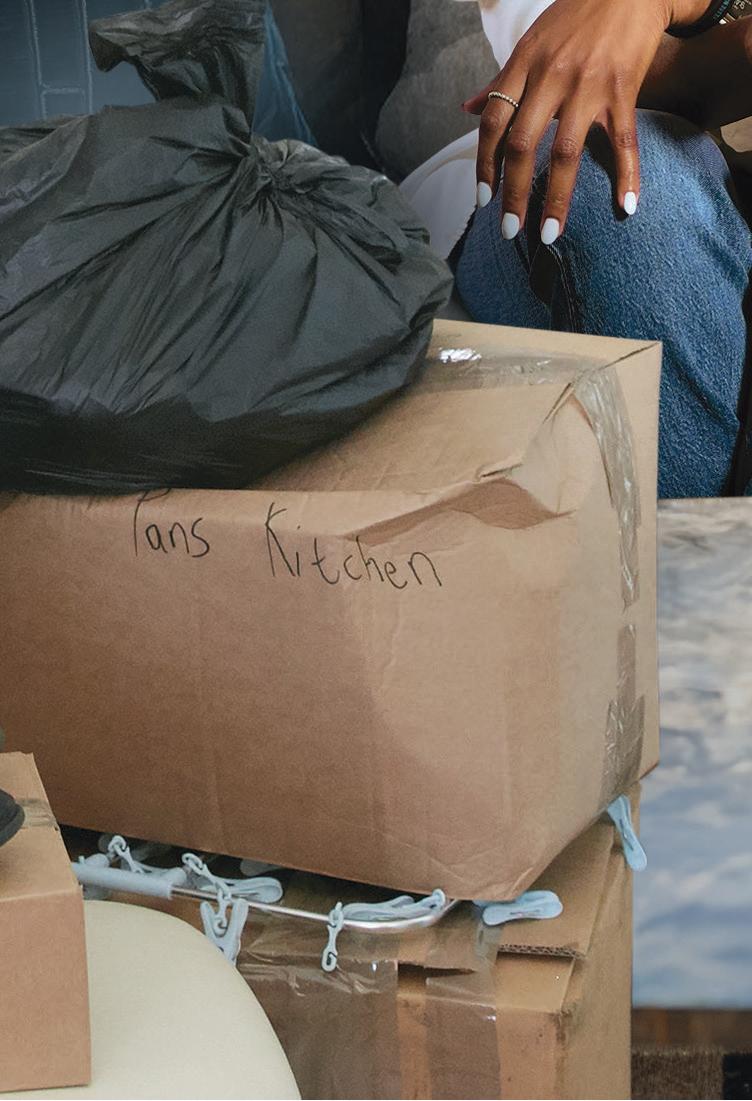


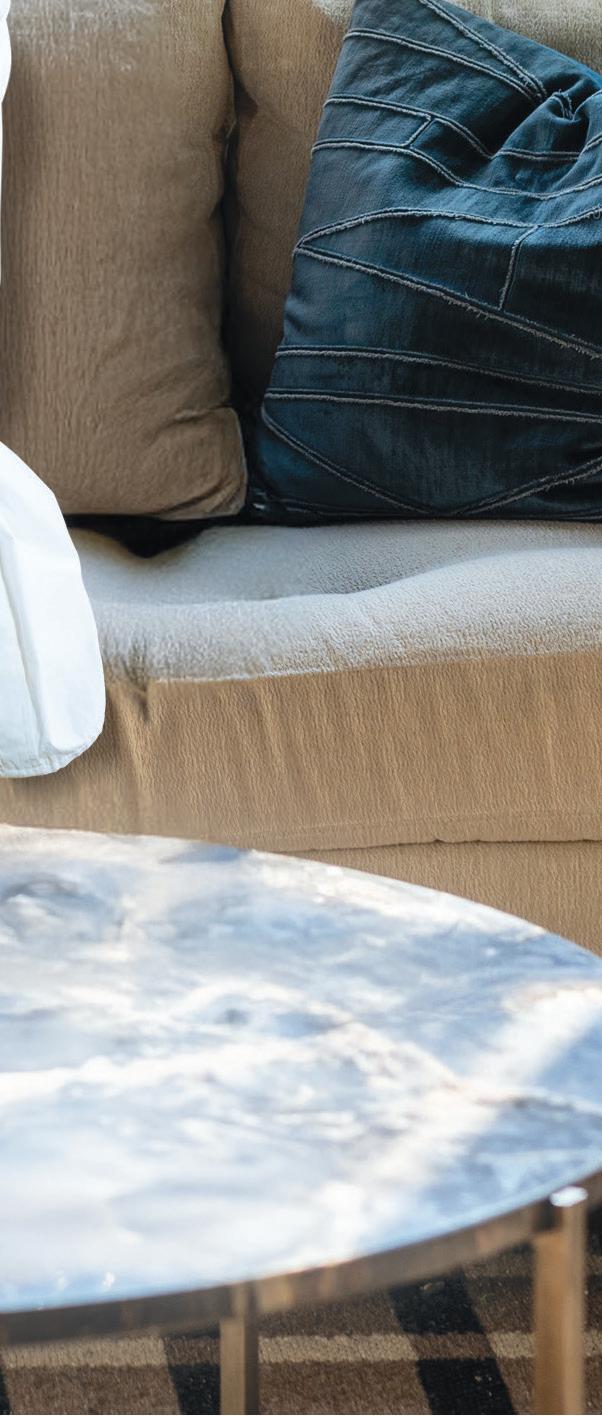

By RON FANFAIR Toronto District School Board administrator Karen Murray
was recognized
with the Exemplary Community Service Award during the 12th annual Emancipation Day Under-
ground Freedom Train Ride on July 31.
“From a Grade One teacher to System Super-
CHARLESTOWN: The Nevis Island Administration (NIA) is reporting a strong start to the 2025 fiscal year, with key financial indicators pointing to solid economic momentum and prudent fiscal management.
Reports prepared by the Ministry of Finance for the first two quarters show that tax and non-tax revenues are trending upward, and both the primary and overall balances are in a surplus position, outpacing results for the same period in 2024 and 2023.
At his monthly press conference on July 22, Premier Mark Brantley, who also serves as Minister of Finance, outlined the NIA’s fiscal performance from January to June 2025.
“January to June 2025 fiscal indicators paint a positive outcome for the period,” he stated. “Although the revenue generated for 2025 thus far is still below budgeted targets, revenue is trending upwards and continues to outpace results for 2024.”
Current revenue for the six-month period reached $82.15 million, comprised of $60.83 million in tax revenue and $21.32 million in non-tax revenue. This represents a 12.53 per cent increase, approximately $9.15 million, compared to the same period in 2024.
Brantley highlighted the robust performance of the Value Added Tax (VAT), particularly at the Inland Revenue Department, noting that collections rose by 56.15 per cent despite the federal government’s VAT

Reduced Rate Programme, which ran from January through June. Although VAT collected at Customs decreased by 27.86 per cent, total VAT receipts amounted to $22.68 million – an overall increase of 17.77 per cent compared to the previous year.
“The indication then of an increase in tax revenue receipts in Nevis is really a good indication of how our local economy is performing,” he said. “Those are taxes that apply in the context of the local economy. So, to me, that’s a great indicator.”
Growth in tax revenue was also supported by strong performances from the Social Services Levy and Property Tax. Social Services Levy collections exceeded both the budgeted forecast and the 2024 figures, up by 4.5 per cent and a substantial 76.18 per cent, respectively.
“Why is Social Services Levy important? As we all know, it’s a levy on wages, so it’s a good indicator of how the job sector is doing… not just the number of jobs, but the value of those jobs,” Brantley said.
Property Tax receipts, while still below budget -
ed targets, have shown remarkable improvement – up 144.01 per cent over the same period last year.
Offshore Financial Services revenue also performed well, increasing by 11.68 per cent compared to 2024, though it narrowly missed the budget target by 0.06 per cent.
Brantley underscored the significance of Nevis’ tax-based revenue model, especially in contrast to the larger inflows of Citizenship by Investment (CBI) funds available to the federal government.
“We do not have the comfort as our brothers and sisters in St. Kitts do of having a torrent of CBI money flowing into the economy. We get a fixed amount monthly and that is all that we get.
“St. Kitts, if that amount in terms of overall income is extremely high, then they have these buffers that that non- tax revenue provides.
“Put differently, this is not being diluted by any flows of revenue that are coming from other sources. So, when we say that tax revenues are up in Nevis, it really means that there’s more activity in the local economy.”
Meanwhile, the NIA has also managed to rein in spending. Total expenditure for the first half of 2025 fell by 12.53 per cent or $13.76 million compared to the same period in 2024 and is down 15.45 per cent or $17.56 million compared to budgeted projections.
“I just wanted to say that fiscally the island seems to be on the right path,” Brantley concluded.
intendent, she has been a trailblazer and a highly innovative educator,” said co-ordinator Itah Sadu. “She is an educator that has always centred student voice and her impact on equity and diversity has been a staple throughout her career as she saw other people’s children as her own.”
Murray was the Central-

ly Assigned Principal for the Centre of Excellence for Black Student Achievement, the first of its kind in public education in North America.
A global speaker and author, her latest book, ‘My Best Idea: Culturally Relevant Pedagogy’ , equips educators with innovative and equitable practices for classrooms and schools.
Renowned cardiologist
Dr. Vivian Rambihar gave the commencement address to science students at the University of Toronto University College graduation recently.
He congratulated the graduates on achieving their degree despite the challenges COVID-19 posed and urged them to seek help when needed and prioritize their wellness.
Serving Scarborough as a cardiologist and community worker for more than four decades, Rambihar is recognized for his global contributions to medicine, science, society and humanity.
He was recently honoured with the Carl Mitchell Award for Community Impact.
As a pioneer in the field

of chaos and complexity science, Rambihar applies these ideas to medicine, proposing their use in solving complex work problems, including peace, health, development, poverty reduction and climate change.
The second of eight siblings (one is deceased) who received a Guyana scholarship in 1969, has also led the
way in diversity/ethnicity and health, developing innovative ideas for reducing obesity, diabetes and heart disease with a multi-level complexity, ‘Health in All Policies’ approach, including grassroots action and social change and social occasions for health. Rambihar’s three daughters have followed him. Dr. Sherryn Rambihar is a Staff Cardiologist at Mackenzie Health and an Adjunct Assistant Professor at the University of Toronto Department of Medicine; Dr. Nadira Rambihar is a Physiatrist and lecturer at U of T and Dr. Vanessa Rambihar is a Family Physician at Women’s College Hospital and an Assistant Professor and Clinical Teacher at U of T.
FANFAIR
people on top of roof buildings hailed us. There was an excitement and a buzz.”
One of the “coolest things ever” about the walk, said Sadu, was the unveiling, at the conclusion, of what’s called “The Great Day on Bathurst,” an archival photograph of 130 people that’s on the BCC building.
“This was a photograph that we took in 2024 for the end of the International Decade for People of African Descent. Today, we can see the progress of the construction,” Sadu said. “There’s just such joy in the unveiling of it and it’s going to remain there right throughout the construction. When people
see themselves in a society and the society reflects them, magic happens.”
The unveiling of the photo is a way of recognizing the many people who have contributed to the constructing of the BCC headquarters, a “future with a three-storey building”, San Vicente added.
Sadu was equally joyful and excited about the “Underground Freedom Train” event, a “symbolic subway journey retracing the path to freedom”.
“It was huge. Hundreds of people showed up; people showed up on a night when there were so many other things happening in this world class city,” said
Apart from speeches on the night and cultural performances, Toronto District School Board’s Karen Murray was this year’s “Emancipation Day Underground Freedom Train Ride Awardee for Exemplary Community Service”. Murray, System Superintendent for Equity, Anti-Racism and Anti-Oppression, was recognized for a career that has involved “opening doors for Black students across the TDSB, leading the Centre of Excellence for Black Student Achievement and shaping the first Anti-Black Racism qualification for Ontario’s teachers”. DEPRADINE
By CHARLIE ANGUS
A Canadian journalist contacted me the other day looking to get a sense of the current state of the Canadian boycott. I pointed out that it was the first time in many months that I had been contacted by anyone in the Canadian media about the issue.
I think they assumed the boycott would fizzle out. That Canadians would lose interest and return to seeking out the best deal at the grocery store, on Amazon or their favourite U.S. tourism destination.
But that hasn't happened.
In fact, if you want to know about the growing power of the Canadian boycott, just check out coverage on the major American networks. They're reporting on how the financial pressure of a grassroots Canadian movement is beginning to shake the American economy.
We've even made the cover of New York Magazine – not that Canadians are ones to brag about such things.
In an in-depth article titled "Canada is Not for Sale," featured with the subtitle "The Canadians are Furious," journalist Simon van Zuylan-Wood, who spent two months in Canada, writes about the strong determination of Canadians to resist the MAGA threat.
He interviewed Dale Hajas, a member of The Resistance community about her experiences as a former snowbird who now refuses to fly south for the winter:
“I’ve written to every tourism outlet in the United States — and not very graciously, I swear — to tell them why I will never set foot there again. I redacted and then sent out-of-date bank statements showing what we’ve spent in the U.S. over the years.”
Dale’s story first appeared in an early instalment of our Portraits of Courage series.
CNBC sent a television team to Canada to make sense of this slow-moving economic tsunami. They predict the boycott will result in a $90 billion hit to the American economy.
Recent polling has found that 75% of Canadians are not only determined to boycott U.S. products, but they also want those products off the shelves. Grocery store owners say they receive pressure from customers to delist American products if Canadian alternatives exist.
Let's examine the staggering collapse of the wine, beer and spirits market. Canada was the number one export market for U.S. alcohol. The total ban in most provinces has
led to a precipitous drop in sales.
Even in Alberta, where MAGA Premier Danielle Smith tried to undermine the boycott by bringing back American alcohol, the boycott remains strong. Many Alberta liquor outlets are refusing to stock bourbon, wines and beer because they don't want to be stuck with unsold stock. Albertans are not going along with the MAGA premier; they are holding the line.
A Unique Political Pressure Point
The boycott has a long history as a political tool to hold the powerful to account. It was first used in Ireland in the 19th century to punish the landlord Charles Boycott, who had abused his tenants and evicted people from their lands.
Irish independence leader Charles Parnell helped promote this novel resistance tactic, whereby the entire population in the region refused to work for Boycott or support his business in any way during the evictions.
The tool was so powerful that Boycott went down in history, his name a synonym for this act of resistance.
Ghandi used the boycott as the tool that allowed a seemingly powerless people to bring down the British empire.
In the 1950s, the civil rights movement embraced the boycott as a nonviolent tool to force the city of Montgomery to desegregate its public transit.
And I remember, growing up, how our local parish encouraged people to boycott grapes in solidarity with the Mexican and Filipino farm workers in California.
My family didn't eat grapes for decades.
But the Canadian boycott is different. It isn’t a negotiating tactic. It wasn't organized, planned or led by anyone. The boycott is the result of an instinctual response from ordinary Canadians across the country to defy the threats and disrespect of Donald Trump.
And Trump can't do anything about it. His understanding of politics is that of a zero-sum game. He not only believes in a world defined by winners and losers but also uses his power to humiliate and degrade those he considers lesser.
From politicians and potential rivals, he demands public concessions and makes them genuflect in public.
But Donald Trump is powerless against the determination of ordinary Canadians. As powerless as Boycott, as powerless as the English overlords in India, as powerless as the racist state in Alabama, by a people

who are united in nonviolent non-co-operation.
MAGA Can’t Handle It
Ambassador Pete Hoekstra recently lashed out, expressing MAGA’s rage at our unwillingness to bend. He says that Canadians are the "meanest and nastiest people".
Why? Because we refuse to give up the boycott.
Suck it up, Pete, because the boycott is growing stronger. And, it’s having a very positive impact here at home.
Ontario wine sales are up 40% and tourism across Canada is on the rise as people opt to spend money in our country rather than crossing the border. Small business organizations are astounded by the boost in sales for companies manufacturing and promoting made in Canada.
Media have asked me if the boycott will end if Trump negotiates a trade deal with Prime Minister Mark Carney.
But that's not what this is about.
Canadians are deeply offended by witnessing the abuse of the rule of law. We are
appalled that people are being kidnapped off the streets and dragged to detention centres where they are facing abuse and degradation.
At least 55 Canadians have been kidnapped. There is no way Canadians will cross the border to support a regime where cruelty and abuse have become official state policy.
The impact of the Canadian-led travel boycott, which is now being supported by people around the world, could result in $29 billion in losses to tourism and upwards of 260,000 jobs this year.
That is the power of the boycott.
So, when people ask you how the boycott is going, you can tell them this:
The boycott is the front line in the fight for democracy. And the lines are holding.
And if they still don’t get it, feel free to tell them what I told New York Magazine’s Simon van Zuylan-Wood:
"Do you think I am going to let that fu**ing criminal take over my country?
Not a chance."



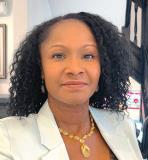






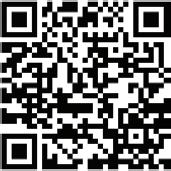





MURPHY BROWNE
By By MURPHY BROWNE
Chattel slavery ended in Canada and throughout the rest of the British Empire on August 1, 1834. The British enslavers (English, Irish, Scottish, Welsh) ended the enslavement of Africans in their colonies.
In Central America, in British Honduras (now Belize); in South America, in British Guiana (now Guyana); in North America, in Canada and on several Caribbean islands, the British had enslaved Africans for centuries.
The slave trade and the coerced, unpaid labour of enslaved Africans offered opportunities for White men and women to accumulate wealth.
Some slave holders never left Canada or the United Kingdom but became rich because they had shares in plantations in the Caribbean, in Bermuda, the Bahamas and Guyana.
The slave trade was lucrative and many traders became wealthy from its profits. Many used their ill-gotten wealth to buy estates in the UK or had large town houses built as status symbols. Some used their wealth to invest in British industries and banks.
The industrial revolution was fuelled by the profits of chattel slavery. Thomas James Bernard, father-in-law of Canada’s first Prime Minister, Sir John A. Macdonald, owned a sugar plantation in Jamaica where 96 enslaved Africans toiled. He received compensation from the British government in 1833 following the passing of the Slavery Abolition Act.
Robert Neilson from Hamilton, Ontario, owned 568 slaves in Trinidad and Sir Thomas John Cochrane, governor of Newfoundland (1825 to 1834) claimed compensation for 72 slaves in Trinidad.
August 1 was officially designated Emancipation Day in 2021 by the federal government. In Ontario, August is Eman-
cipation Month proclaimed by The Emancipation Month Act, 2021. Several Canadian municipalities and provincial governments have also proclaimed August Emancipation Month through legislation.
The preamble to the Emancipation Month Act, 2021 reads in part: “Anti-Black racism has been prevalent in the history of Ontario. Slavery, inequities, exclusion and many other forms of discrimination have been the basis of much of Ontario’s past.
By proclaiming August as Emancipation Month, Ontario is following the UN General Assembly’s adoption of the period of 2015 to 2024 being the International Decade for People of African Descent to ensure people of African descent receive the recognition, justice and access to opportunities they deserve.
Ontario pays tribute to the important contributions and leadership that the Black communities have made and continue to make in Ontario as a major part of the vibrant social, economic, political and cultural fabric of our province.
Emancipation Month is a time for healing, unification and restoration. It is about eliminating discrimination by continuing to educate and advance the importance of racial equity across the province.
“Emancipation Month will help build a more inclusive province, where everyone is treated with fairness, respect and dignity.”
Despite the platitudes expressed in the preamble to the Emancipation Month Act, 2021, the government of Ontario has delayed the teaching of Black history in Ontario schools. On Friday, July 4, the Minister of Education announced that there would be at least a year long “pause” to the new curriculum which included teaching the history of Black Canadians as part of the Grade 10 curriculum.
The Ontario Human Rights Commission (OHRC), in recognition of the ongoing inequities, launched “Dreams
Delayed” in March.
“On March 27, 2025, the Ontario Human Rights Commission (OHRC) launched Dreams Delayed, an Action Plan to address systemic anti-Black racism and discrimination in Ontario’s publicly funded education system.
“Developed through comprehensive consultations with Black students, educators, administrators and community members, this plan identifies 29 specific calls to action, with clear timelines for implementation by key education stakeholders, including the Ministry of Education, school boards, trustees, unions and other education professionals.”
During August, now Emancipation Month, we can celebrate our heroes and sheroes, those who are recognized and celebrated and those unsung activists. There were many enslaved Africans who resisted enslavement throughout the four hundred years that Europeans imposed chattel slavery on Africans. Those leaders include Bussa and Nanny Grigg (Barbados), Zumbi (Brazil), Solitude (Guadeloupe), Cuffy/ Kofi (Guyana), Nanny (Jamaica) and Gaspar Yanga (Mexico).
After slavery was abolished, colonization was another cross to bear for Africans on the continent and in the Diaspora. Marcus Mosiah Garvey born August 17, 1887, in Jamaica is recognized as the father of the modern Pan-African Movement. Garveyism inspired generations of Africans “at home and abroad”, encouraging unity, empowerment and self-determination among people of African descent worldwide. Garvey’s philosophies fueled independence movements and inspired social justice activism.
Garvey launched the Red, Black and Green Pan African flag on August 13, 1920. The flag became a symbol for the worldwide liberation of African people.
As we acknowledge/celebrate Emancipation Month, remember our ancestors and encourage the continuation of their activism in the present and future generations.
tiakoma@hotmail.com
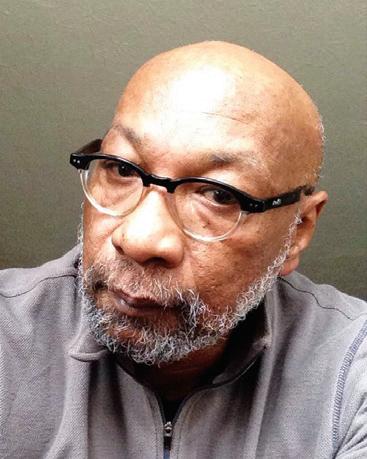
By PATRICK HUNTER
There was a time when coups d’etat only happened in developing countries. Among the first actions the coup leaders would take, after the arrest of the president or prime minister, was the takeover of the organs of communication – radio stations, television stations, etc. The purpose, of course, would be to ensure that there would be no attempt to create opposition to the takeover.
After the election that saw Donald Trump defeated by Joe Biden, Trump’s supporters, urged on by Trump, stormed the Capitol in an effort to keep Trump in power by overturning the election results and preventing the transfer of power. That coup failed.
The man that essentially fomented the attempted coup was allowed to leave and go home. He was not arrested and thrown in jail for what he had done. Furthermore, he was allowed to seek a second term, which he won, again becoming president of the United States.
We are at a period in the state of world affairs that is frightening. The current president of the United States is in the process of setting himself up as the king of not just the United States, but of the world. To get there, he has set in motion egregious policies of turning the economies of the world upside down.
Trump has decided to place absurdly high tariffs on the goods imported into the United States. In his mind, the countries which export goods to the United States will pay those tariffs. At least, that is what he has been trying to convince the people of the United States. In fact, these tariffs are a tax which the consumers of the United States will pay, after the vendors have been forced to pay higher prices for the goods they import.
But the tariffs – the tax – has had, and will continue to have, a negative impact on the international economies. Because
of the increased costs of the goods that are imported into the U.S., many businesses, particularly those that trade with the U.S., have been forced to see their domestic activities slowed, causing them to lay off workers which, in turn, will force some of these countries to provide increased social supports for laid-off workers.
In Canada’s case, for example, many industries – automotive, steel, lumber, to name a few – have been subjected to uncertainties because the costs of importing goods to the U.S. from Canada will be significantly increased. Prime Minister Carney and his government have already indicated that they will provide some of these supports to workers that have been affected. Not all countries, especially developing countries, can afford to do that.
This has resulted in individual countries (or groups of countries, as some African countries did) attempting to venture to Washington to beg for leniency, or the elimination of tariffs against the products they export to the U.S. They call it negotiations.
The other thing that Trump does is to claim to underwrite peace treaties and in return, the U.S. would have access to rare minerals. This is what he has done in Ukraine and in the “peace treaty” between the Democratic Republic of the Congo (DRC) and Rwanda.
Perhaps, if there is a “glass half-full” scenario about the tariff attack, it hopefully forces these countries to become more self-sufficient. Obviously, there are some things that they cannot produce for or by themselves, such as automobiles and other similar manufactured goods. The fact is that U.S. is not the only place that produces many of the necessary products that may be needed. Hence, seeking other markets should become an earnest undertaking by these countries.
Of course, the tariffs is only one of the many “revolutions” Trump has undertaken to change. He has revoked anything to do with diversity, equity and inclusion (DEI). He has sued or threatened to sue media, some of which have succumbed to his threats. He has threatened to withhold funding to uni-
versities and colleges unless they eliminate DEI and provide statistics on their faculty and students, as well as doing more against antisemitism. He has fired many senior civil servants and replaced them with loyalists with dubious credentials. He is rejecting any concerns for climate issues, cutting back on emergency management, cutting back on health research, and the list goes on.
Then, of course, he is the king of superlatives – the kind that would suggest that any president before him were worthless and wrong. That he is the greatest president. And he still lies. There is every reason to believe that Trump will make every effort to stay on, perhaps to be president for life at the end of this term. While the U.S. Constitution states that no president can serve more than two terms, there is reason to believe that he would try. That would require an amendment to the Constitution which is a complicated issue. It would require two-thirds majority of both houses of Congress and ratification by most states.
Trump has shown that he has very little, if any, respect for the Constitution and the law so he probably would push on ahead, appealing to a Supreme Court, for example, which has shown, what some agree, a bias towards Trump.
Vladimir Putin, the Russian president did work around term limits some years ago by letting his then prime minister, Dmitry Medvedev, run for and win the presidency in Russia. At the next election Putin ran and won allowing him to essentially set about making the changes that would keep him in place to essentially become president for life.
The U.S. Constitution does not allow this work-around such as Vice President Vance would run at the top of the ticket with Trump as running mate. But Trump believes there are options which could be explored, and it seems that the Republican Party is prepared to give him what he wants.
Trump loves this power. It will be tough to give it up without trying to keep it. And, if the end of his first term is any precedent, he will try again..
Email: patrick.hunter11@gmail.com

Though Lachemi’s initial discussions with Davis in 2016 did not yield a university immediately, they led to the creation of the Brampton-based Rogers Cybersecure Catalyst which is a TMU national centre for training, innovation and collaboration in cybersecurity.
Through its innovative training and certification programs, a unique commercial accelerator for cybersecurity start-ups and scale-ups, the first-of-its-kind cyber range, extensive public education initiatives and a prominent policy development platform, the Catalyst helps enhance Canada’s global competitiveness in cybersecurity.
Last year, it partnered with BlackBerry to bolster cybersecurity skills in Malaysia.
“Starting as a national initiative, it is now international,” said Lachemi who oversaw the creation of the Faculty of Science while serving as Dean of the Faculty of Engineering & Architectural Science. “I always gave kudos to Brampton because they saw the benefit of doing this.”
University life can be stressful, and the pandemic added an extra layer of challenges for many students.
Last May, TMU broke ground to begin construction on its innovative new Student Wellbeing Centre that will consolidate the institution’s well-being services under one roof, improving access for the university community.
“One of the biggest challenges facing society is mental illness and addiction, especially among young people,” the former Canadian Journal of Civil Engineering associate editor said. “The pandemic has accelerated this. As a university with 48,000 students, we are not isolated from what is happening. We are a reflection of society. We have a clinic on campus and counselling for students along with an office dealing with sexual violence and another for students struggling with disabilities. However, these services are in different buildings.”
Tired of trying to figure out which part of the campus offices are located for various services, students suggested the creation of a hub.
“My mission is to trust students because they are much closer to the issues than me,” said Lachemi, a Council of Ontario Universities member. “They came forward, saying they wanted to partner with us to enhance this service.”
It is very uncommon for students to vote
in favour of increasing their fees. When they do, it is usually under specific circumstances where the benefits are perceived to outweigh the costs.
In November 2022, TMU students voted in a referendum to increase the student wellbeing levy fee by $34.90 a term to fund the eight-storey hybrid mass timber centre.
Without government funding for the initiative, the university started a fundraising campaign to transform O’Keefe House at the corner of Gould & Bond Streets into the new centre that is expected to open by the end of 2026.
Chancellor Donette Chin-Loy Chang started the campaign rolling by donating $1 million last January. Other donors so far include philanthropists Richard Rooney, Mark Bonham and spouses Edmund and Fran Clark who have each donated $1million.
Sometimes, difficult discussions are necessary for growth, clarity and stronger relationships.
While some institutions have renamed their universities because of historical ties to the slave trade, TMU made the change because of Egerton Ryerson’s ties to the Indian Residential Schools system, of which he was one of the architects.
His statue was toppled in June 2021 during a rally organized in response to the preliminary discovery of the remains of as many as 215 Indigenous children buried on the site of the former residential school in Kamloops, British Columbia.
Lachemi, who held a Canada Research Chair in Sustainable Construction, said there were conversations around the university’s name from the time he joined TMU as a Civil Engineering professor on August 1, 1998.
“There is no doubt that Ryerson championed modern education in Canada,” the award-winning teacher and mentor said. “But the foundation of residential schools was set in his time. I am not here to judge what he did. It is about our university.
“The conversations around his statue on our campus were controversial for many years. People were saying we can’t walk along Gould St. because of the statue of someone who initiated the concept of residential schools.
“The name was a source of frustration because it created divisions. Alumni from the 1950s and 1960s told me that no one was talking about that when they were at this institution. Others said to keep the

name because it is in their DNA. People approached me on campus and called me, saying we need to change the name. I told them that was not going to be the solution. I proposed a difficult conversation.”
Lachemi established a task force to conduct a thorough review of Ryerson’s historical role and recommend actions to address his legacy.
In September 2021, the Board of Governors approved a motion to accept the Standing Strong Task Force’s final report and its 22 recommendations, including a name change to the downtown Toronto university.
After feedback from over 30,000 people and 2,600 suggestions, the name was changed in April 2022.
Chin-Loy Chang was a member of the 17-member advisory committee that guided the process of identifying a new name that reflects the university’s strengths, values and inspirations.
“I lived with that university for a long time and that university lived with me for a long time,” she said. “In addition to being an alumna, my late husband (Raymond Chang) was a Chancellor. The name Ryerson has been integral in my life, but it was time for a change.”
The new name, Lachemi noted, has united the university.
“I think the fact that Toronto is part of the name is very good for the reputation of the university,” he said. “When I travelled around the world before the name change and presented myself as a representative of Ryerson, some people asked, ‘What is Ryerson and where is it?’. Now, nobody asks those questions. That is the best thing in terms of public relations we have done.”
Chin-Loy Chang said Lachemi’s leadership has been brilliant, visionary and transformative.
“Through a global pandemic and a rapidly changing world, he has led TMU teams with kindness, compassion, dignity and diplomacy, upholding the underpinning values of the University – reconciliation, inclusive excellence and innovation,” she added.
TMU honorary board member Jack Cockwell pointed out that Lachemi has successfully led TMU with his intellect, integrity and a strong commitment to academic excellence in the past decade.
“Notable accomplishments under his leadership include the launch of two new faculties and the successful development of the Brampton campus,” the philanthropist said. “Given Mohamed’s visionary leadership, TMU’s reputation as a model for educational innovation has been meaningfully enhanced.”
Lachemi’s outstanding leadership extends beyond the institution, influencing the broader community.
CivicAction has been the beneficiary of his guidance which is an essential aspect of a university president’s role.
Created in 2002 by late civic leader David Pecaut after a business and community leaders’ summit, the Toronto-based non-profit organization boosts civic engagement and addresses urban challenges in the Greater Toronto & Hamilton Area (GTHA).
“Under Mohamed’s watch, CivicAction’s partnerships with TMU have created impact through research that has expanded the diversity of voices at decision-making tables and, more recently, connected entrepreneurs to the urban challenge of housing affordability,” said Chief Executive Officer Leslie Woo. “His passion and openness are a beacon for the city in dark times and an anchor to what a positive civil society can be.”
France is the most popular destination for Algerian students studying abroad because of historical ties, a shared language and strong academic programs.
The eldest of five children and the first in his family to attend school, Lachemi left his North African homeland in 1986 to pursue a Master’s in Structural Engineering at the University of Sherbrooke, where he went on to earn his PhD.
He didn’t speak a word of English when he arrived in Quebec as an international student.
“I wanted something different, especially with a global perspective,” Lachemi said was the reason for coming to Canada. “The North American perspective is quite different from the European perspective. I am glad I chose to come here.”
He believes the federal government’s decision to decrease international student enrolment, which brings in additional fees to universities and colleges, will negatively impact Canada’s reputation on the global stage.
“I think the government had to do something to limit international students because international recruitment was done in a way that had a damaging effect on Canada because some students were taking advantage of,” said Lachemi who has an honorary Doctor of Laws from Ontario Tech University. “The federal government was right to do something to correct the problem. However, the way they did it is penalizing everyone, and I think this is wrong. Instead of examining the problem and finding solutions, they established a cap that will not serve Canada well. I am concerned this country’s reputation will suffer. Some international students may stay here and contribute to the country, while others will leave and become ambassadors for Canada.”
His journey from international student to university president and vice-chancellor is a powerful example of the transformative potential of global education, the value of diversity in leadership and the extraordinary contributions international students make to academic and professional communities.
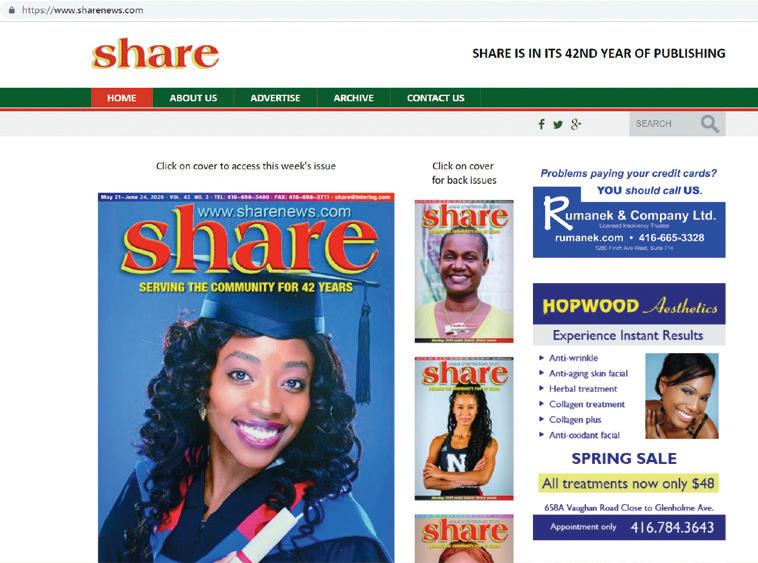

By RON FANFAIR
Coming from a family of trailblazers, Dr. Boluwaji Ogunyemi was raised with the belief that limitations are meant to be challenged and paths created, not just followed.
Dr. Abayomi Ogunyemi was the first epilepsy specialist in Newfoundland and Labrador (NL) and Mary Ogunyemi opened one of the first Black hair care and accessories stores in the country’s easternmost province.
Endorsed at the end of May as the Canadian Medical Association’s (CMA) president-elect, their son is set to become the first Black health professional and the youngest at age 39 to lead the 158-year-old organization.
With a membership of physicians and medical learners from each province and territory, it is the largest association of medical doctors in Canada.
As he prepares for his new role, Ogunyemi plans to build on the progress made in shaping healthcare, supporting physicians and advancing medical knowledge.
“The CMA has already done a lot of great work in terms of ensuring that health remains on the agenda at the national level and that conversations around health care nationally continue,” the clinical associate professor of medicine at Memorial University of Newfoundland’s Faculty of Medicine said. “Having served as a CMA Ambassador and on the organization’s Media Network and Governance Committees, I am familiar with the CMA and ready to make the organization work for physicians across Canada.”
Ogunyemi brings vast knowledge and experience to the position.
He advised the Canadian government on who should be the first beneficiaries of COVID-19 vaccines at the height of the pandemic, designed North America’s first leadership development and implementation program for climate change health leaders which is funded through the British Columbia Ministry of Health and was the lead author of a national policy paper, leveraging virtual care to improve health equity.
In addition, Ogunyemi lobbied the NL and federal governments for increased resources for medical education in rural areas, leveraged virtual care to manage patients in his home province and was the inaugural Assistant Dean of Social Accountability at Memorial University Faculty of Medicine.
“Health care and other institutions must be accountable to society, so the social accountability lens is critical,” he said. “It is important to meet patients in the communities in which they live and make that model of care visible at the national level.”
As a Canadian Doctors for Medicare (CDM) board member for three years, he believes that reform must take place


within the public system to benefit every Canadian.
The CDM stepped into the national health care debate in May of 2006 when a group of physicians and friends became concerned about the increased privatization in Canadian health care, and about the development of a two-tiered health care system that would allow the wealthy to buy private insurance for private care at the expense of most Canadians.
“I left with advanced knowledge of evidence-based health policy and a national network of accomplished fellow health policy and health systems leaders which will all serve me well in my new role,” said Ogunyemi who holds a Diversity and Inclusive Professional certificate from Cornell University.
The CMA presidential role is expansive.
In the first year, the holder is provided with media training and orientation to address the issues facing the association.

As the association’s senior-most elected officer and primary spokesperson on national policy and advocacy matters identified by the Board, the president represents the organization at provincial and territorial medical associations’ annual meetings in the second year in which the president and president-elect share presidential duties.
In the final year, the CMA past president serves on the Human Resources and Compensation Committee and as chair of the Nominations Committee.
Several leading medical practitioners supported Ogunyemi’s candidacy.
“Dr. Ogunyemi would bring both his academic and leadership experience to the clinical arena in the role,” said Dr. Ian Bowmer, the former Memorial University Faculty of Medicine dean and Royal College of Physicians of Canada president.
“It is a real opportunity to make use of his diversity work and complement CMA’s ongoing leadership.”
Canada’s first Indigenous dermatologist, Dr. Rachel Asiniwasis, witnessed firsthand Ogunyemi’s unwavering dedication to advancing patient care, championing physician well-being and promoting inclusivity in dermatology and the healthcare system.
“He has consistently demonstrated an exceptional commitment to improving such outcomes with deliverable results,” the Canadian Skin Patient Alliance 2023 Dermatologist of the Year said. “His advocacy for patient care is reflected in numerous initiatives that prioritize not just the physical health of patients, but their emotional and mental well-being…Dr. Ogunyemi possesses a unique ability to unite individuals around a common goal, fostering collaboration among diverse stakeholders.
“I have no doubt he will continue to advance the interests of both healthcare providers and patients through his new role.”
Independent Senator Mohamed-Iqbal Ravalia said Ogunyemi is a strong leader, advocate and changemaker.

“In my experience, I see how policy change is important to shift health outcomes and I feel it is clear that Dr. Ogunyemi’s efforts in advocacy, medical education and social accountability will have an outsize impact on patients and the profession of medicine as a whole,” he added.
Family physician Dr. Mari-Lynne Sinnott said Ogunyemi has a passion for and commitment to social justice that is fundamentally linked to health.
“In working together on political action and advocacy projects nationally
and through the Canadian Federation of Medical Students and locally at Memorial University’s Medical Student Society, it comes as no surprise to me that now, as an experienced physician and advocate, he seeks to continue this important work through the CMA presidency,” said the Memorial University of Newfoundland’s clinical associate professor.
Known for its stunning natural beauty and welcoming residents, Ogunyemi’s parents felt at home when they arrived in NL in 1990 with Boluwaji and his older brother.
Though he was the only Black student in his high school graduating class of nearly 600, Ogunyemi said he never felt isolated or out of place.
“I had a wonderful experience growing up, always feeling included even though I understand that every newcomer has such a positive experience,” said the second of their three siblings. “When I pursued a double major at the undergraduate level in Ontario and I went away for specialized training in Vancouver, I always came back here because it is my home.”
After considering careers in teaching, communications and policy, Ogunyemi chose medicine.
“I have always had a passion for science and working with people,” the 2017 Harry Jerome Award recipient said. “I am fortunate that my career in medicine has allowed me to do those things. I have influenced health policy at the national level,
I teach and mentor resident students and I have advocated. I have done all of those in my profession.”
Graduating with honours in 2008 from Western University where he received the Young Alumni Award in 2019 and the Science Alumni Award of Achievement four years later, Ogunyemi was the first Black student raised in Newfoundland and Labrador to train at Memorial University of Newfoundland Faculty of Medicine where he served as president of the Medical Students’ Society.
He earned a Diploma in Clinical Epidemiology in 2009 and his medical degree four years later. Shortly after completing his post-residency training at the University of British Columbia, specializing in dermatology, he established a community practice in St. John’s and a travelling clinic in Labrador City.
Dermatology is a unique field of medicine that combines medical, surgical and pediatric expertise and addresses a wide range of skin, hair and nail conditions.
“In this field, you can make diagnoses quickly and use your mind, hands and heart with compassion to manage patients,” said Ogunyemi, who completed the University of Toronto Rotman School of Management Director’s Education program. “It is patient-centred and you get to see children and adults which stands out for me because not every medical specialist can do that. Also, this area of specialization is diverse and I see people with skin cancer, allergies and other complicated medical disorders. With lots of new treatments coming out, there are more ways that I can help my patients, What I also like about being a dermatologist is that I can practice in many different settings, including communities with about 900 people (Natuashish is an Innu First Nation community in northern Labrador) that is only accessible by air. That allows me to be flexible and go where patients are.”
Dermatology is a leading specialty in virtual care, particularly in tele-dermatology because of the visual nature of skin conditions which lends itself well to remote diagnosis and monitoring using images and video.
The COVID-19 pandemic significantly accelerated the adoption of tele-dermatology, with many dermatologists now incorporating it into their practice.
See DOCTOR Pg. 11



By RON FANFAIR
Community service was instilled in Amah Harris from an early age. Her Jamaican-born mother advocated for people affected by tuberculosis, leprosy and mental disorders after joining her husband in Dominica.
They also lobbied for a school to be built in the village that her father financially supported.
Watching her parents actively engaged in the community inspired Harris to follow in their footsteps.
At an early stage in life, she also grasped that community work, when done with cultural sensitivity, can strengthen and revitalize a community’s cultural fabric.
The educator and cultural activist died on July 9.
Multi-arts practitioner Rhoma Spencer met Harris soon after arriving in the Greater Toronto Area in 1999.
“Amah was my source of reference on the contributions of Black theatre in the drama and theatre canon of Canada,” she said. “I will miss her wisdom and cultural insights into the Dominican carnival traditions. I will remember her as that theatre director who gave young Black actors a position at the table so they could see themselves as professionals and not as people indulging in a hobby.”
In her teenage years, Harris realized that community service and the arts are deeply intertwined, each enriching the other.
She was the co-founder & artistic director of the Secondary Schools Drama Society and Little Theatre Movement that presented a diverse range of theatrical shows, including Shakespearean plays and international musicals.
In 1964, Harris was the recipient of
the British Council Award for Best Performance in the Commemorative Shakespeare Festival celebrating 400 years since the dramatist’s death.
She also facilitated workshops before leaving Dominica in 1970 to study theatre at the Banff School of Fine Arts in Alberta.
After moving to the University of Windsor to complete her theatre studies and being on the Dean’s List, she returned to the Caribbean and joined People’s Action Theatre – formerly Little Theatre Movement – that Alwin Bully and Daniel Caudeiron transformed with a new socio-political focus.
A year later, Harris came back to Canada to pursue undergraduate and graduate teaching degrees.
The arts, however, remained at the heart of her personal and professional journey.
Harris directed Black Theatre Canada’s first show in 1973 and, four years later, started writing plays in the Kwakoo Anansi series, using the traditional African characters to educate and entertain.
The plays toured schools in Ontario and were performed across Canada, the United States and South Africa.
In 1985, Harris founded Theatre in the Rough.
“Amah could have gone the other way and stayed with the more formal type of theatre,” said entrepreneur and raconteur Itah Sadu. “But she went down the road with popular theatre which was the theatre of engagement and the community. She chose that style of theatre to bring messages of equity and race.
“Back in the day when educators were struggling with how to address the needs of Black children, she was able to get them, through popular theatre, to rethink

their approach to teaching. She was also an incredible drum major about Indigenous Peoples of the Caribbean.”
Last year, Harris was the conductor for the 10th annual Emancipation Underground Freedom Train Ride.
“I am so happy we got her to blow that whistle to start the ride,” said Sadu who is the principal organizer of the event. “When I asked her, I knew she was ill.”
Harris was a member of the Toronto Arts Against Apartheid Foundation that organized the Arts Against Apartheid Festival that brought late South African Archbishop Desmond Tutu to the city in 1986.
With the late Harry Belafonte as honorary chair, the eight-day festival marked a pivotal point in Canada’s stand against apartheid.
Harris co-founded the annual two-week mini-mas camp organized by the Caribbean Arts Group and Tropicana Community Services.
Started five years ago, the program introduced young people to several aspects of carnival, including its history and costume making.
“Amah cared about young people and wanted them to have a better understanding of themselves and their place in this country so they could walk with their heads up proud,” said Dance Caribe founder Martin Scott-Pascall.
After witnessing Dance Caribe’s 35th anniversary production last year, Harris encouraged him to take it into high schools.
“She was a huge supporter of the performing group and volunteered to write a grant to get funding,” Scott-Pascall recounted. “She felt a wider audience should see the production. Amah was an amazing woman and we will miss her.”
For 15 years, Harris taught theatre and science at Gordon A. Brown Middle School.
As a trained teacher, she integrated elements of drama, education and culture into techniques for problem solving, teacher curriculum and building community within the classroom.
As an anti-racist education advocate, she led workshops aimed at overcoming the legacy of institutionalized racism in Canadian society.
Organization of Calypso Performing Artists president Henry ‘Cosmos” Gomez said Harris was an integral part of the city’s social and cultural fabric.
“She dedicated much of her time, energy and resources to serving the Black and Caribbean communities in Canada and the wider diaspora,” he said. “She was a dear, dedicated and committed soul.”
While universities provide the framework for institutional excellence, it is the people within them who champion the pursuit of high standards and excellent outcomes.
Dr. Pemberton Cyrus, said Dalhousie University President & Vice-Chancellor Dr. Kim Brooks, was one of those people who elevated the university to great heights.
The former head of the Department of Industrial Engineering passed away suddenly on June 24 at his home in Bedford, Nova Scotia.
He was 65.
Brooks met Cyrus shortly after arriving on campus in 2010.
“We crossed paths in ways familiar to many of us in this room, serving on committees, navigating and shifting administrative roles, trying to fix things, sometimes quietly, sometimes persistently,” she said at the funeral on July 9. “What struck me even then and became clearer every time we had the chance to work together was that Pemberton just didn’t want things to function. He wanted them to be fair, efficient and always equitable.”
The Canadian Association of Law Teachers’ past president said Cyrus possessed a remarkable combination of systems thinking and personal care.
“He could map out a complex academic process, suggest a way to streamline it and then turn around and ask with real concern how a student was doing or whether someone on the team was being supported,” noted the former Queen’s University and University of British Columbia
law professor. “He wasn’t performing care. He embodied it. You could see the same sensibility in his research.
“Whether he was simulating ways to improve the ergonomics of grocery check stands, optimizing logistics routes to reduce emissions in Atlantic Canada or helping us understand why second-year engineering students sometimes lose their confidence, Pemberton always saw the human within the system. He wanted to make processes better and smarter, but ultimately, he wanted to make people’s lives better. He did it for decades…For Pemberton, the work was never abstract. It was about legacy, and it was about his family.”
Dr. John Newhook, Dean of the Faculty of Engineering, said Cyrus was a valued faculty member and a pillar of the Industrial Engineering department.
“His exceptional leadership was the guiding force for so many important initiatives within Dal,” he said. “He was known for his deep passion for our student community and dedication to the goals and aspirations of Imhotep’s Legacy Academy. Most importantly, he was a friend to so many of us.”
While professors’ primary focus is on academic pursuits, many play crucial roles in community outreach and supporting underserved youth.
Led by a volunteer board of directors from Dalhousie and the community, Cyrus chaired the Imhotep Legacy Academy (ILA) program that provides academic support and mentorship to mainly Grade
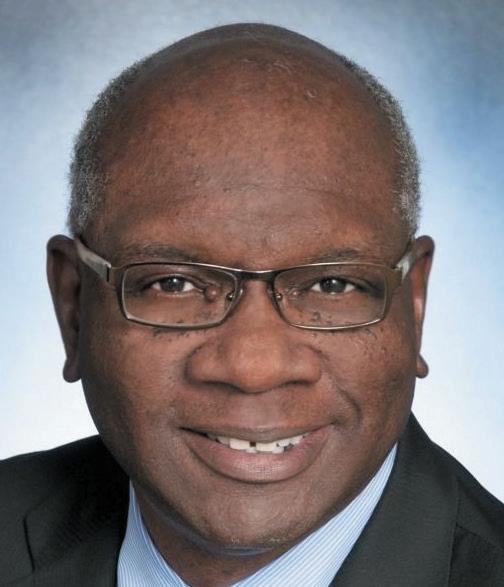
6 to 12 students.
The program also engages young people in STEM enrichment activities to enhance the representation of Black professionals in science.
Brooks said Cyrus was pivotal to its growth and success.
“The academy is one of the most meaningful outreach programs in Nova Scotia and that is not by accident,” she said. “Under Pemberton’s leadership, it became a province-wide initiative, supporting thousands of Black students in STEM education. The academy flourished under
his care. He helped build a pipeline not just in engineering programs, but also the confidence, belonging and opportunity.”
Joining ILA in 2009, Cyrus took over as chair four years later when co-founder Dr. Kevin Hewitt stepped down.
“He came in to provide solid leadership that the academy required for its growth and continued success,” he said. “The academy’s remarkable growth over the past decade is a result of his outstanding leadership skills, deep commitment to equity and social justice, his keen intellect, his analytical skills as a physicist and his great ability to collaborate seamlessly with all…
“To effect change, you have to have both a bottom-up and a top-down approach. This is a place where he excelled. His desire to help Black students advance knew no bounds. He accepted any opportunity to do so gladly and acted with alacrity.”
Under Cyrus’ leadership, ILA provided hands-on STEM learning, mentorship and pathways into post-secondary education, significantly increasing the number of African Nova Scotian/African descent students entering Dalhousie Engineering.
“Pemberton was always making sure they were succeeding and doing well,” said ILA co-founder Dr. Barb Hinch who is Assistant Vice-Provost Equity & Inclusion at Dalhousie. “There were times we met with students who were struggling and Pemberton was there to usher them to successful completion. He had a way of making you feel valued and supported.”
CONTINUED FROM Pg. 10
In 2023, Cyrus was recognized with the Discovery Centre’s Science Champion Award for his outreach leadership to the Black Nova Scotian community.
Establishing a Black Faculty and Staff Caucus was at the top of Dr. Afua Cooper’s list when she arrived at Dal in the summer of 2011 to become the third James R. Johnston Endowed Chair in Black Canadian Studies.
Cyrus was one of the first people she met.
“He supported the idea wholeheartedly, offered wise and thoughtful counsel and generously provided space in the Industrial Engineering department for our meetings,” said Cooper who is a professor in the Department of Historical & Cultural Studies at the University of Toronto. “It is because of his support that the Caucus was launched with strength and clarity of purpose. I will always remember him for that and his quiet strength, moral clarity and the grace with which he led as a scholar, a leader and a human being.”
Dalhousie is a popular choice for international students.
Mark Okerke, who left Nigeria six years ago and is a mechanical engineering student at Dal, said Cyrus transcended what it meant to live a good life.
“He stood out in every crowd not because he demanded attention, but because his presence was undeniable,” he said. “From a late-day conversation about professionalism and discipline to gentle moments of mentorship, he showed up and never stopped smiling. As an international student, I often struggled with belonging, direction and self-assurance. As an immigrant himself, Dr. Cyrus had walked some of those same paths. He knew the weight many of us carry, like the isolation, the pressure and the barriers and he transformed that knowledge into empathy, guidance and motivation. His voice was one of the first that reminded me that I had a place here. He always poured into everyone around him and never stopped smiling.”
Cyrus finished high school at Grenada Boys Secondary where he taught and was set to travel to Cuba to pursue architectural studies when he received a scholarship to attend the University of the West Indies St. Augustine campus in Trinidad to study engineering.
After being the top student in his second year and graduating in 1982, he came to Nova Scotia on a Canadian International Development Agency (CIDA) scholarship to pursue a Master’s at the Technical University of Nova Scotia (TUNA). At graduation in 1984, he received his Iron Ring presented to graduating engineers.
In 1988, Cyrus obtained his doctorate from the same university. His thesis was ‘The Vehicle Scheduling Problem: Models, Complexity and Algorithms’.
Starting at Dalhousie as an Assistant Professor 37 years ago, he earned tenure in 1992 and was promoted to Associate Professor three years later. In addition to Department Head of Industrial Engineering, he was Associate Dean of Engineering (Undergraduate Studies and Associated Universities) and Acting Associate Vice-President of Academics.
Cyrus was instrumental in shaping the future of engineering education in Canada through his longstanding involvement with the Canadian Engineering Accreditation Board (CEAB).
As the member representing Atlantic Canada, he chaired and participated in 18 accreditation visits to institutions. He also represented the CEAB and Engineers Canada at the Canadian Engineering Education Association’s annual conferences and internationally at meetings of the International Engineering Alliance and on capacity-building initiatives in Costa Rica.
Complementing his academic work, Cyrus co-founded an industrial engineering consultancy firm in 1989 with close friend Dr. Harvi Millar who is a Professor of Operations Management at Saint Mary’s University Sobey School of Business.
They met at UWI in 1979.
“Pemberton stood for fairness and eq-
uity and, as a Black professor, he wanted to ensure that Black students succeeded,” said St. Lucian-born Millar who delivered the eulogy. “While our grief is profound, let us hold on to the wonderful memories he left behind. I hope his spirit and legacy will live on through all the lives he has touched. When an elder dies, a library burns to the ground. We will ensure that his legacy continues to live on.”
The celebration of Cyrus’ life was sprinkled with humorous moments.
Sharing that they learned about Lotto/649 time and its $1 million jackpot at the time soon after arriving in Nova Scotia to study, Millar said Cyrus conceived the idea to write an algorithm to beat the jackpot, thinking they could get rich quickly and return to the Caribbean.
“We created a database with three years of winning numbers, produced a probability distribution that was biased towards the numbers that didn’t show up yet and a random number generation using the probability distribution,” said the Visiting Professor & Scholar at Strathmore University in Kenya. “We bought Lotto tickets weekly, winning just $20. After a year, we stopped playing.”
Millar is the godfather of Cyrus’ daughters, Shanni and Akili, who are engineers.
Shanni is a Road Safety Engineer at the Nova Scotia Department of Transportation & Infrastructure Renewal while Akili is a Graduate Research Assistant at Concordia Turbulence Research Lab in Montreal.
In preparing for her father’s funeral, Shanni said she had many questions and often thought about calling him.
“He had all the answers and he was always there when I needed him,” she tearfully said. “He was my biggest supporter. He never saw any limitations for me.”
When trying to choose an overseas university to pursue undergraduate and graduate studies, Cyrus’ younger brother, Dr. Sheridan Cyrus, suggested he join him at Dalhousie.
“He said they had an outstanding dental school,” recalled Sheridan Cyrus who was
a high school biology teacher in Grenada. “As I did my research, I discovered that the only dental schools in Canada accepting international students then were Dal and McGill which had a French requirement for students. The other thing my brother mentioned is that if we stayed together, we could share some costs. That seemed attractive and I joined him in August 1983.”
At the funeral, he recalled their childhood days, including some of the adventures they embarked on.
“I remember when the first human walked on the moon in 1969, we bought telescopes and went out that night looking to the sky to see if we could see him,” recounted Sheridan Cyrus who arrived in Toronto in 1989 to practice dentistry. “Pemberton said that engineers make things and industrial engineers make things better. What you experienced here was the better version of his life. He loved building models and Legos and reading science fiction books.”
Outside academics, Cyrus enjoyed playing chess and was an accomplished photographer and artist.
He created abstract pieces and a mural for his high school, drew cartoons for publications and was hired to write calligraphy on signs and for the name of the local newspaper in Grenada.
Though Canada was home, Cyrus maintained close ties with his birth country. He created the Grenada Port Authority (GPA) Information System software, which has powered the island’s ports for the last three decades.
GPA Port Manager Ian Evans attended the funeral.
While in Grenada earlier this year to lead the deployment of an updated release of the software, Cyrus took his daughters on an island tour, that included visits to his high school and favourite beach – Grand Anse.
In addition to his daughters, Cyrus is survived by his wife of 32 years, Grace Bowen-Cyrus..
FANFAIR
CONTINUED FROM Pg. 9
Artificial Intelligence (AI) is rapidly transforming dermatology, particularly in the areas of skin cancer detection, diagnosis and treatment planning.
“Artificial intelligence has tremendous potential for medicine in general,” said Ogunyemi who was the first physician from NL to complete an interdisciplinary Fellowship in Health Systems Improvement at the University of Alberta School of Public Health. “Physicians spend an enormous amount of time doing paperwork when we would like to use that time doing face-to-face work with patients. With dermatology, AI can help as a diagnostic aid.”
In British Columbia, a project is underway to use AI-powered medical imaging to help triage dermatology referrals, aiming to reduce wait times for skin cancer diagnoses.
Nobody gets to where they are without support, which often includes the quiet and steady presence of parents, siblings and other family members.
A professor of neurology at Memorial University, his father left Lagos to pursue a Mayo Clinic Fellowship and his mother was among the first women in her region in Nigeria to attain post-secondary education.
They left Nigeria with just a few hundred dollars.
“When you are in leadership and high-profile positions, most people see you doing important work,” said Ogunyemi whose TEDx talk, ‘Edge Effect: Different Perspectives Yield Creativity, Innovation’ details how he was awakened to a different and wider perspective after taking a sociology course at Western University. “They do not see the people behind the scenes who are helping to care for you and are encouraging you when things don’t go your way. “My parents are my anchor in that regard.”
Children bring a sense of balance to the lives of busy professional parents.
Raising two young daughters, ages fiveand-a-half and four years old, in NL gives Ogunyemi pride and purpose, fueling his strength daily.
“It is fulfilling when I can go home to them at the end of the day,” he said. “They don’t understand the intricacies of the work I am doing, but I hope they and their generation will benefit from the fruits of my labour as we strive for healthier populations. It is also important to see the world through their lens. A lot of the assumptions we make are through something we read
or observed. Children do not have those experiences as yet, but they see things from an angle that we can’t. Adults can
benefit from their untainted perspectives.” Ogunyemi assumes the one-year role of CMA president in May 2026.


ARIES (March 21-April 19): Don’t hold back on the 10th and 11th; let your creative energy soar. Socialize, meet and greet, and share ideas, and someone you click with will offer information that interests you, whether it’s related to work, entertainment or a potential partnership. Stay mellow when dealing with domestic matters on the 12th, 13th and 14th. Wasting time overreacting or getting involved in someone else’s drama will cause you to miss out on a chance to make positive changes that can lower your overhead or allow you to enjoy using your skills to accomplish something that can help you get ahead professionally. You may crave change on the 15th and 16th but get your finances in order first. Eliminate clutter, dead weight and anything holding you back, and clear a path forward to a positive outcome.
TAURUS (April 20-May 20): Initiate change covertly on the 10th and 11th. The amount of time and effort you put in will help justify the choices you make by the results you achieve. Refuse to let negativity or criticism stand between you and your needs. Engage in a healthy cleanup on the 12th, 13th and 14th. Revamping your space to meet your demands or updating your look to bolster your confidence will help you take advantage of opportunities with strength and courage. Emotional issues will likely surface; don’t jump to conclusions. Instead, ask questions and offer practical solutions. Keep an open mind on the 15th and 16th. Domestic issues such as shared expenses will require thoughtful consideration and compromise. Resolutions will require common sense, long-term perspective and give-and-take.
GEMINI (May 21-June 20): On the 10th and 11th, do your due diligence before you jump into help mode and make promises that will benefit others more than yourself. Set boundaries and make yourself clear regarding how much time, money or effort you are willing to volunteer. You’ll gain support on the 12th, 13th and 14th if you let your actions speak for you. Dedication and hard work will yield promise and results that inspire others to be a part of your plan. Be careful not to promise more than you can deliver or give away more than you can afford. Be prepared to provide proof, documentation or any other evidence to maintain integrity and pave the way to success. On the 15th and 16th, choose your words carefully and control your emotions.
CANCER (June 21-July 22): Express your feelings through your actions on the 10th and 11th. A helping hand, kind word or gesture will help pave the way to a better relationship with someone you live or work alongside. Pay attention to detail on the 12th, 13th and 14th, and spare yourself the grief of redoing. Premature presentations will lead to criticism and doubt. Minimalism is in your best interest. Too much of anything can be costly to you personally. Look inward and consider self-improvement projects that will lift your spirits and motivate you to take more proactive steps toward achieving your goals. You’ll gain power and perspective on the 15th and 16th if you reach out to those you want on your team with love and understanding.
LEO (July 23-Aug. 22): Sign up for something that excites you on the 10th and 11th. A creative or entertaining venue will lead to discussions that encourage you to take charge and make personal changes, giving you hope for a brighter future. Actions speak louder than words, so get moving. Put your emotions aside on the 12th, 13th and 14th to ensure you don’t miss hearing or receiving important information that can transform how you use your skills, knowledge and experience. Set the standard instead of letting someone else dictate the outcome.
Someone close to you has a hidden emotional agenda; proceed with caution. An emotional situation will escalate on the 15th and 16th if you mix business with pleasure. A change of plans is in your best interest. Avoid situations that can compromise your reputation.
VIRGO (Aug. 23-Sept. 22): On the 10th and 11th, spend more time getting to know the people you encounter and discover what you can share that will benefit everyone. How you present yourself and your objective to others will determine how partnerships will form or dissolve. Keep money and emotions separate on the 12th, 13th and 14th. Don’t promise more than you can deliver or accept someone’s word at face value. Get what you want in writing, ask questions and leave nothing to chance. Equality is the best route forward when trying to form a lasting connection with someone. Get your thoughts and feelings out in the open. Learn from experience on the 15th and 16th, and you’ll forego the loss that comes with a partnership or situation gone bad. Keep life simple and avoid complications.
LIBRA (Sept. 23-Oct. 22): Keep your eyes on your objective on the 10th and 11th. The most important thing is to finish what you start and to live up to your word. Excessive or indulgent behaviour will lead to gossip, mishaps and a dent in your reputation. Channel your energy into something that leads to concrete results on the 12th, 13th and 14th. Refuse to let emotional issues challenge your capacity to get things done or ruin your ability to gain access to the people you need on your side to advance. Review your financial, medical or contractual situation on the 15th and 16th and make adjustments to what isn’t working for you. Sell off whatever you no longer need and do what you can to reduce overhead and stress.
SCORPIO (Oct. 23-Nov. 21): On the 10th and 11th, learn from experience and talk to those who have been and done what you are aspiring to, and you will make headway. A reunion or reaching out to someone who has had a significant impact on your life can change your perspective on partnerships as you move forward. Choose your words carefully on the 12th, 13th and 14th. Offer creative solutions to problems, and you’ll gain the confidence of those you encounter. Your power comes from experience, knowledge and completion. Be precise and do as you say. A change to how you express yourself will be necessary if you want to bring about positive change. Be a good listener, and you’ll find solutions that accommodate everyone, including yourself.
SAGITTARIUS (Nov. 22-Dec. 21): Pick a lane on the 10th and 11th; you can’t be everything for everyone. Make choices, stick to your agenda and do whatever it takes to reach your objective with the least amount of interference. It’s time to put yourself first. Home improvements on the 12th, 13th and 14th will put your mind at ease and help you save money in the future. An opportunity to utilize your skills more efficiently or to transition into a position that offers higher returns, benefits or a financial safety net appears promising. Don’t let love or stressful situations cost you emotionally or financially. You’ll crave change on the 15th and 16th. Step away from situations that cloud your mind and do something refreshing that encourages you to consider positive alternatives.
CAPRICORN (Dec. 22-Jan. 19): Observe how others react to you on the 10th and 11th, and it will help you put your partnerships in perspective and craft a plan that ensures a brighter and more fulfilling future. Let your intuition guide you and help turn negative situations into a positive outcome. Redesign your lifestyle to meet your demands on the 12th, 13th and 14th. Consider
your overhead and who in your life costs you the most financially and emotionally, and redirect your energy to ensure takers, users and abusers don’t deplete your spirit. Spend more time making your space functional on the 15th and 16th, and it will ease stress and encourage you to take on more projects that add to your comfort and personal investments.
AQUARIUS (Jan. 20-Feb. 18): Reflect on who you are, what you’ve achieved and where you are heading on the 10th and 11th, and it will encourage you to rethink the possibilities and what’s most meaningful to you. Pay attention to where your money goes and think twice before you spend on something or someone unnecessarily. You’ll gain access to information on the 12th, 13th and 14th that can help point you in a lucrative direction. Consider unique alternatives to how you utilize your skills and adapt them to fit what’s trending. Set aside your emotions and let your intelligence guide the way. A change at home will be uplifting on the 15th and 16th, helping to improve your relationships with the people who mean the most to you.
PISCES (Feb. 19-March 20): Get out on the 10th and 11th; mingle, socialize and let your entertaining personality lead the way. The people you encounter and the connections you make will lead to interesting opportunities and personal growth. Romance and updating your image are in your best interest. Be careful not to reveal too much personal information or make impossible promises on the 12th, 13th and 14th. Excessive behaviour will be your weakness, giving those you encounter a chance to take advantage of your vulnerability. Concentrate on personal growth, health and diet, and looking, feeling and doing your best to ensure progress over regression. Expect the unexpected on the 15th and 16th when dealing with friends, family and business associates. Fact-checking will be essential, along with taking control instead of being manipulated by others.
















retired, some because they were burned out. Others became gun-shy after seeing what some of their older colleagues went through during the pandemic. Before COVID, the Ontario health system was already facing challenges. The pandemic broke the system wide open, exposing the vulnerabilities that had been building for years.”
Nearly 2.5 million Ontarians don’t have a family doctor.
Abdurrahman said attracting newly trained physicians to enter and stay in clinical practice, especially in underserved areas or primary care, is an urgent challenge.
“They are looking at the situation, saying it is hard to pay their staff and purchase equipment if they are not making enough money to make their practice financially viable,” said the co-supervisor of the Canadian Society of Allergy & Clinical Immunology Fellow in Training curriculum. “They are hesitant to open doors, not knowing if they can keep them open.”
Doctors spending far too much time on paperwork when they should be focused on caring for patients is also an area that Abdurrahman will address during her tenure.
“We have family doctors spending 19 hours a week doing paperwork,” she said. “Artificial intelligence can assist with some of that administrative burden. We are also looking for a partnership with the government to help ensure that offices have access to this to be able to do that.”
The demanding nature of a physician’s career often leads to their families residing in different countries.
That was the case with Abdurrahman.
The youngest of five siblings born in Nigeria spent time in Saudi Arabia, the United Arab Emirates and England before arriving in Canada at age 12.
After completing his residency in 1974 at the Hospital for Sick Children, Dr. Murtala (Muri) Abdurrahman returned to Nigeria to work in the Ahmadu Bello University Faculty of Medicine where he rose to professor of pediatrics in 1981.
I BUY VINYL RECORDS
CA$H PAID FOR YOUR RECORDS!
He was a pediatrics professor at the King Saud University College of Medicine in Saudi Arabia for five years until 1990 and at United Arab Emirates University Faculty of Medicine and Health Sciences before coming back to Canada in 1992 to practice.
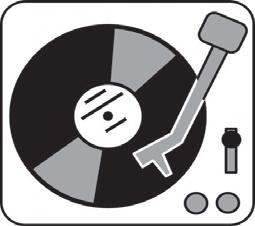
Reggae, Calypso, Soul Latin, Jazz & Blues
CALL (647) 819 7659

Instead of choosing a major city, the family patriarch – who retired in 2021 – decided to serve in Sudbury.
The Northern Ontario sense of community that
was immediately inviting and welcoming appealed to his daughter who completed high school at Lo-Ellen Park Secondary that celebrated its 60th anniversary last year.
“There are a lot of immigrant populations, and everyone is welcomed to showcase their various cultures,” she said. “I liked that.”
Seeing the healthcare system stretched in a small community opened Abdurrahman eyes to the much-needed advocacy for better resources and equitable access to care.
Behind every diagnosis and treatment, there is a personal story that shapes the care and connection between doctor and patient.
Her dad’s caring interactions with patients and a close association with a cousin who is a veterinarian influenced her decision to be a physician.
“During her studies and practicums, she took me to see a cow that was having trouble giving birth and a horse,” said Abdurrahman who worked in her father’s office during the summer. “It was a bit scary at times being around these large animals. Rather than caring for animals, human medicine appealed to me. I wanted to be in a profession that is caring and one where I could talk to children and their parents. Being part of people’s lives seemed extremely rewarding.”
After finishing her undergraduate degree in physiology and math at McGill University, she did a Master of Mathematics at the University of Waterloo.
Abdurrahman’s focus was on biostatistics which is the application of statistical methods to biological and health-related data.
She was the first Waterloo biostatistics master’s student who planned to become a doctor.
“There were not a lot of students in the master’s program who had an interest in doing medicine,” noted Abdurrahman who did a co-op at Mt. Sinai Hospital. “A lot of them had an interest in medical research and working with medical researchers. Sometimes, doctors might think statisticians speak a different language and vice versa. I wanted to ensure there is a collective understanding.”
In her first year in medical school at the University of Toronto, she offered to help Dr. Ian Johnson create a biostatistics module. At the time, he taught ‘Determinants of Community Health’ which is a four-year undergraduate curriculum course that was introduced to the Faculty of Medicine in 1999.
“I was new to teaching medical students statistics and the challenges were two-fold,” Johnson said. “First, there was incredible diversity in the class with respect to statistical knowledge and skills. Most students had taken a basis statistics course, some had advanced statistical knowledge and some had none. In addition, I had limited time in the classroom and wanted the students out in the community working on applied research so they could get experience with the eventual goal that they do their own quality improvement projects when they graduate. The solution was an online module.”
Because of her master’s in statistics, friendliness and openness, Abdurrahman was hired to be the main person writing the module after Johnson accepted her offer and received funding for the project.
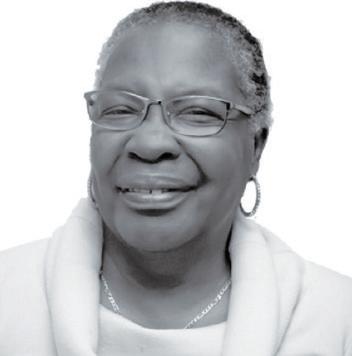
“I appreciated her high level of knowledge and skills while I could provide the overall direction,” said the 2023 Excellence in Postgraduate Medical Award winner for teaching, performance, mentorship and advocacy. “She was very energetic and highly committed to the project of building an educational online biostatistics module for medical students, she always set high standards for herself and was always pushing for the highest quality outcome. Also, she was inclusive in that she made sure the module was approachable and open to everyone, irrespective of their background knowledge in statistics.”
After finishing McMaster University’s Postgraduate

Errol’s Moving, Delivery and Garbage Removal. 416-3332464.
Immaculate, furnished room and kitchen, near bus stop. Steeles/Islington. Just renovated, no pets, nonsmokers, ready to occupy. Call Keith: 416-650-9558.
Medicine, Clinical Immunology and Allergy Residency program in 2012, Abdurrahman became a pediatric allergist/immunologist at McMaster Children’s Hospital and an adult and pediatric allergist/immunologist at various medical offices, including Q & A Allergy in Mississauga.
As a medical doctor specializing in the diagnosis, treatment and management of allergic and immunologic disorders, she agrees that allergies are on the rise.
“Climate change and pollution play big roles,” said Abdurrahman who is an assistant clinical professor of medicine at Toronto Metropolitan University’s new School of Medicine. “The other day, someone told me that ragweed pollen allergies feel worse now than 10 or 20 years ago. I told them they were correct. The pollens are trying to propagate because they want ragweed to come out the following year. With so much pollution in the air, pollen are impacted, increasing their allergic potential and affecting viability and germination. When it is cold, they modify themselves to be hardier so they can survive pollution. But part of the change that ragweed has made for their pollen to survive pollution has made it more allergenic. That is why people are feeling more effects of those pollens.”
To safeguard against allergies, she said creating greener spaces can be beneficial.
“Also, if you are having lots of symptoms, talk to your doctor because there are interventions,” Abdurrahman said. “What happens unfortunately is that people learn not to like certain things if it makes them feel awful. I don’t want kids to think that if they go outside during the summer, they will feel sick. It is important for people to recognize there are treatments and things they can do to combat this, and we can teach your body to become more tolerant.”
With all her accomplishments, she never forgets her roots and the parents who paved the way.
Her mother, Maryam Abdurrahman, supported her physician husband by assisting in his medical practice while raising their children.
“I am standing on their shoulders,” Abdurrahman said. “They are determined people who are not afraid to take risks. They could have stayed in Nigeria and enjoyed a comfortable life. Adventurous by nature, they were always seeking new experiences and change.”
Other family members and individuals outside that immediate network assistance also played a meaningful role.
“My siblings read a lot of applications and support me in things that I do,” added Abdurrahman who enjoys travelling and dancing. “My uncles and aunts are also strong believers in higher education who encouraged me to pursue my passion. There are people I met that have helped me on this journey. I think of Professor Leon Glass at McGill University who supported me and a few others in our cohort, high school teacher John Savage who inspired my love for math and friends who I convinced in my first year to do this degree with me.”
Humility shines brightest when we recognize those who lifted us.
To be the first woman of her colour to lead a major organization is not just a milestone for Abdurrahman.
It is a quiet act of humility, carrying both the weight of representation and the hope of transformation.
In 2014, Dr. Ved Tandan became the OMA’s first Black president. The general surgeon’s mother, Verna Tandan (Blake), migrated from Jamaica in 1954 to study at Queen’s University. She was married for 63 years to Jagroop (Jaggi) Tandan who was raised in Lucknow, India and taught Chemistry at Mohawk College before retiring in 1989.
She died in 2023 at age 90 while her husband passed away last January at age 94.

Want to get your house or office cleaned? Call Barbara 647-447-2104.
the sport after going to see close friends Hopeton Taylor and Andre Metivier, who were on scholarships in the United States, compete at the 1990 national trials at Centennial Stadium.
While watching his friends on the track, he observed that some of the competitors were athletes he had defeated in high school.
Sensing his excitement, Metivier asked his pal if he wanted to run and suggested he could lie to say Bailey belonged to a track club.
Buoyed by the offer, Bailey borrowed some running clothes and track spikes and, without warming up, won the 100-metre dash.
The following year, he came out on top in the 60-metre dash at the provincial indoor championships and was selected to represent Canada at the Pan American Games in Cuba where he secured a silver medal in the 4x100-metre relay.
Meeting world-renowned track and field coach Dan Pfaff in 1991 at a national team relay camp in Baton Rouge, Louisiana was a defining moment.
“I didn’t believe that I could be a track star until I met Dan,” said the two-time Canada Sports Hall of Fame inductee. “While talking one day, he asked me about my weight training regimen, and I told him I never lifted a weight in my life. He asked me about nutrition, and I asked ‘What are you talking about? He inquired about my fall and summer training and my reply was, ‘I play basketball dude’.”
At the national track & field championship in 1992, Bailey was runner-up in the 100-metre event behind Bruny Surin.
The next year, he captured a bronze medal in the 100-metre dash and silver in the 200-metre event and was an alternate on the Canadian relay team at the 1993 World Championships in Stuttgart, Germany.
That did not sit well with Bailey who vented his displeasure by hurling a television in the direction of team coach Mike Murray after he and other Team Canada officials attempted to explain the reason for his omission.
He later admitted that the incident was a pivotal moment in his career, pledging he would never allow anyone to determine his selection on a national team.
“I told Mike that he would never again be in charge of me making his team,” Bailey said at a reception in 2006 to mark the 10th anniversary of his gold-medal performances in Atlanta. “Of course, I was very upset at not running in the individual sprints or sprint relay because I knew I could probably have done some damage. This was my stage and I thought I could do something.”
Pfaff got wind of Bailey’s heated argument with Murray, told him he was disruptive and invited him to join his camp whenever he was ready.
“Dan told me I was talented and could be the greatest, but I had to get serious,” he recounted. “That was the first time I felt a sense of urgency unlike anything I had experienced before. It occurred to me that I could be squandering my talents and purpose.”
Pfaff coached Bailey during his peak years and they developed a close relationship that has endured to this day.
“Dan is one of the smartest and most optimistic guys I know and someone who I could talk to about life,” the Canada Walk of Fame Star member said. “If I am going into a sales pitch or am part of a consortium trying to buy a company, I call him anytime. He understands the philosophy of business, how structure works and what stimulates me.”
In 1994, Bailey signed his first professional contract with Fenerbache Athletics which is the athletics section of Fenerbache
SK that is a major Turkish multi-sport company in Istanbul.
“That was the first time I signed for real money,” he said. “When I was having difficulties with the Canadian federation three decades ago, I was in discussions with the Turkish government to represent that country. If I had accepted the offer, I would have signed for US$1 million. If I were an Olympic medallist, they promised I would get US$1 million for the rest of my life. I had that option on the table, but the Canadian federation had to sign off on it which they would not have done. I was hamstrung.”
Bailey is not surprised that several worldclass Jamaican athletes recently switched allegiance to Türkiye.
“The window of opportunity for athletes is very small,” he said. “As the CEOs of their corporation, they must look at viable business opportunities. If you are promised more cash for something you do very good, I suggest you take it. Sports is a business and culture is not. The Jamaican athletes changing allegiance will always be culturally attached to their birth country.”
At the 1996 Summer Olympics, Bailey became the first Canadian since Percy Williams in 1928 to win a 100-metre gold medal in a world record time of 9.84 seconds.
After three false starts, including two by Britain’s Linford Christie who was disqualified, he got to the finish line ahead of Namibia’s Frankie Fredericks and Trinidad & Tobago’s Ato Boldon, reaching a top speed of 12.10m/s that was a new velocity benchmark.
“When he is in that zone, in the middle of the race, very few people can play his game,” Pfaff said after the race.
A week later, Bailey teamed up with Bruny Surin, Glenroy Gilbert and Robert Esmie to win the 4x100-metre event in 37.69 seconds, then the sixth fastest time in history. They were the first team to defeat an American quartet in 15 sprint relay Olympic competitions.
The start was delayed for several minutes as the Ghanaian team refused to leave the track after being disqualified for using an ineligible runner.
At the World Championships the next year in Berlin, he led the Canadian quartet to victory in the 4x100-metre final in 37.86 secs which was the fastest time recorded that year and was a member of ‘Dream Team II’ comprising Carl Lewis, Leroy Burrell and Frankie Fredericks that won the sprint relay in 38.24 secs.
While blazing the track, business was always at the forefront for Bailey who retired from the sport in 2001 after the World Championships in Edmonton.
A year before becoming an Olympic champion, he started Bailey Inc. to leverage the branding business of Donovan Bailey.
“That was the business that was formed in my head as a kid, watching my parents and family in their structure,” said Bailey who founded DBX sports management agency to help athletes with self-promotion and career development and was part of a consortium, including Snoop Dogg and seasoned entrepreneur Neko Sparks, that were unsuccessful in their bid to purchase the Ottawa Senators of the National Hockey League.
“That was something I wanted to implement because I dreamt big and wanted bigger. I wanted to understand brand management, sponsorship and lucrative relations with businesses around the world with track being at the forefront.
“As track evolved and I became a brand, I wanted to understand partnership. Now, I don’t need sponsorship. If I am promoting a product, it is because I own it or am a partner. Bailey Inc. is the business side of everything that I represent.”
The highly sought motivational speaker uses his iconic gold medal win as a powerful metaphor and foundation in his
corporate presentations to top chief executive officers and money managers around the world.
“I show the tape of the race before each appearance and people would ask me about things in the race that I break down for them,” said Bailey who tried out for the Canadian bobsled team in Calgary, preparing for the 1994 Winter Olympics in Lillehammer, Norway.
Possessing technical skills, critical thinking and soft skills that allow him to interpret data effectively made him an ideal fit for CBC Sports as a track and field analyst.
“It provides me an opportunity to share my opinions on something I have done,” the father of four children said. “It is a platform for me to share with fans how it is I did it and how it is being done today…I am a huge sports fan, but in track and field I was blessed to learn from incredible people like Dan (Pfaff) who is one of the best bio-mechanic coaches. He taught me things like how the human body works, mental preparation, psychology and everything about how the human body gets from points A to B at its highest velocity and as fast as possible.
“Chiropractor Mark Lindsay is among the best soft tissue specialists in the world. I read a lot and talk to many people which makes me understand the differences between today’s technology, nutrition and training. I am getting to evolve and grow while supporting the younger generation competing today.”
Bailey is encouraged by the emergence of young Canadian athletes achieving success on the world stage.
“However, what I don’t like is the politics of the sport,” the Lou Marsh winner in 1996 as Canada’s Best Athlete said. “There are people in volunteer positions who do not take the athletes seriously. There is no proper business structure in place to help the kids develop their brand and make them understand they are CEOs of their brand. Track and field is not a team sport by any stretch of the imagination even though there are team relays.”
In October 2023, Bailey’s ghostwritten memoir – Undisputed: A Champion’s Life – was released.
“I have been asked for years to do this,” he said. “Sometimes people read things about you and say, ‘that is not you and you tell your story’. Penguin Random House came along with an offer and I took it…I am open to a second book which will reflect my voice a bit more.”
The book’s original title was ‘Win or Learn’.
Why the change?
“I don’t think we are celebrated enough,” he said. “I am a history lover. I was the first man in history to break the 10-second mark in the 100-metre race and win a gold medal in the same event. I just thought if I am going to leave something, there needs to be an understanding of what I did and how I did it. ‘Undisputed’ speaks to those things. Win or Learn is what I live by.”
The title resonates with Bailey because his sports hero, the late Muhammad Ali, was boxing’s undisputed champion from 1974 to 1978.
When we talk about being undisputed, particularly in terms of global influence, courage and legacy, the fighter considered the greatest heavyweight boxer of all time fits the bill like few others in history.
“He was the man,” said Bailey who is among the cover foliage of ‘Canada: Our Century in Sport’ that is an anthology celebrating 2000 moments of Canadian sport. “My dad was a huge boxing fan and I was the
remote control.
“As a young Black kid watching and being mesmerized by someone who has a sport, the media, culture and people in his hands and being able to control all of that said a lot about the man. He understood the causes, spoke the truth and stood up for what he believed in, knowing that he would be criticized.”
When Ali lit the flame at the 1996 Olympics opening ceremony, Bailey was almost 1,000 miles away in Texas receiving treatment for an adductor injury that prevented him from walking two weeks earlier.
A few days after his gold medal triumph, he met his idol at a hotel in the Olympic Village.
“He shook my hand and said, ‘Hello Champ’,” recalled Bailey. “I smiled and told him, ‘No, you are the Champ’. That was a surreal moment that I will never forget.”
Knowing how much he revered Ali, three-time heavyweight champion and close friend Lennox Lewis invited him to attend the funeral in Louisville in June 2016.
While track and field is popular in Europe with strong participation and high levels of engagement, it does not have the same level of currency in the United States.
Michael Johnson, who won 12 Olympic and World championship races, launched the Grand Slam Track League to boost the popularity of the sport in North America and globally.
Each slam comprises six event categories for men and women, with each event category featuring two disciplines that athletes compete in over a three-day weekend.
Starting in Kingston, Jamaica, events were held in Miami and Philadelphia. The last stop in Los Angeles was cancelled.
Before the start of the series, Johnson’s team contacted Bailey to be an adviser to help raise money and awareness.
“It did not get to the point where we discussed a business relationship that would have taken me there,” he said. “It is daunting to start something. What Michael and his team did to raise cash and give our sport more exposure and branding are things I will always support.”
Putting on a three-day competition in mid-season, Bailey feels is untenable.
“I am stuck on Serena Williams and her husband Alex Ohanian Athlos NYC model one-competition, three-hour format,” he said. “I like that.”
In 1997, Bailey and Johnson competed in a 150-metre race at SkyDome to determine who was the world’s fastest man. The American pulled up at the 110-metre mark, citing an injury.
Understanding that success is not just a personal gain, Bailey knows there is a responsibility to give back and uplift others.
Three decades ago, he started the Bailey Foundation, which partners with the Oakville Community Foundation to raise funds and provide scholarships to student athletes.
“I know the power of the platform I have and how I can use it to help enhance the lives of others,” said Bailey who supports Halton’s Big Brothers Big Sisters and cancer and Alzheimer’s initiatives. “For me, giving back is natural.”
